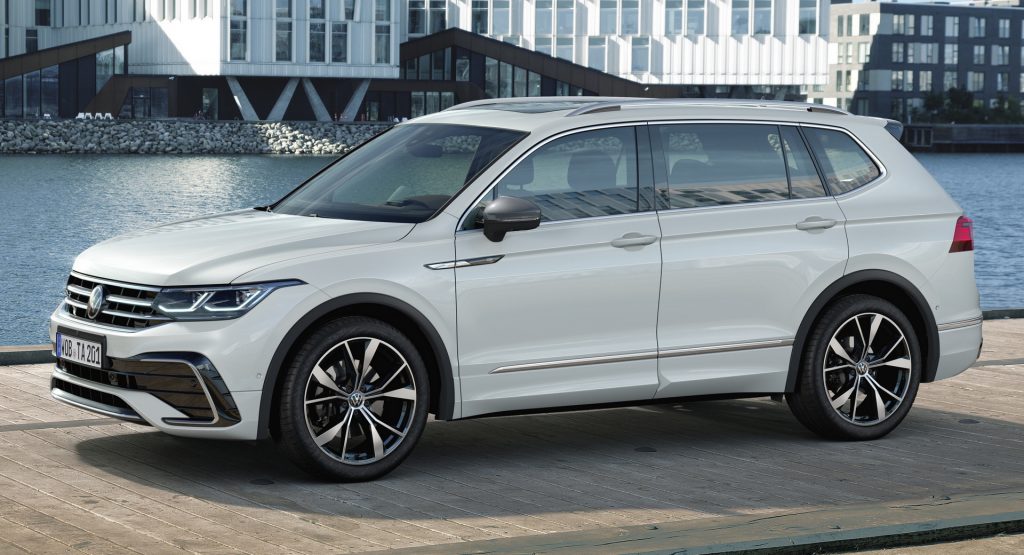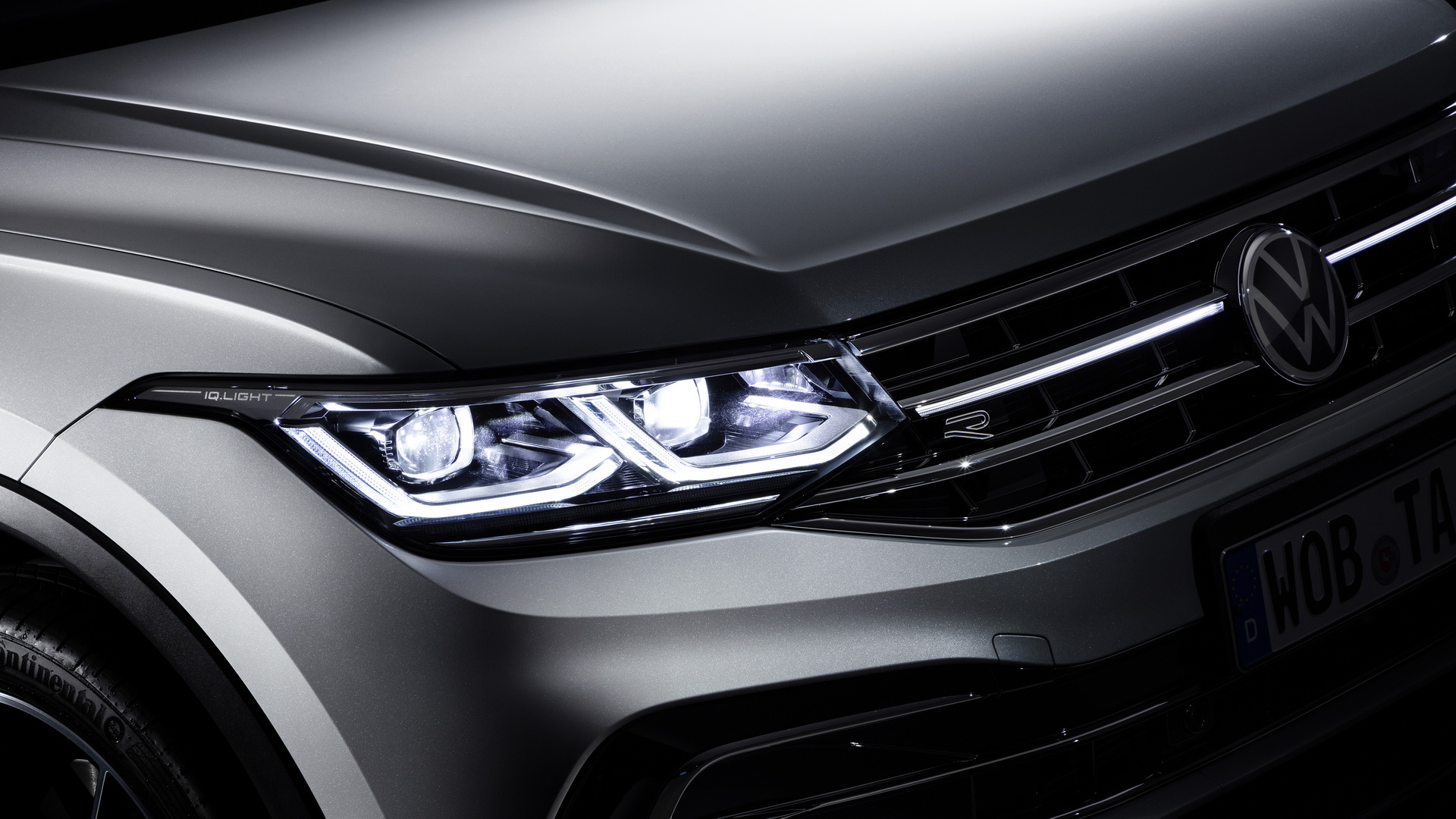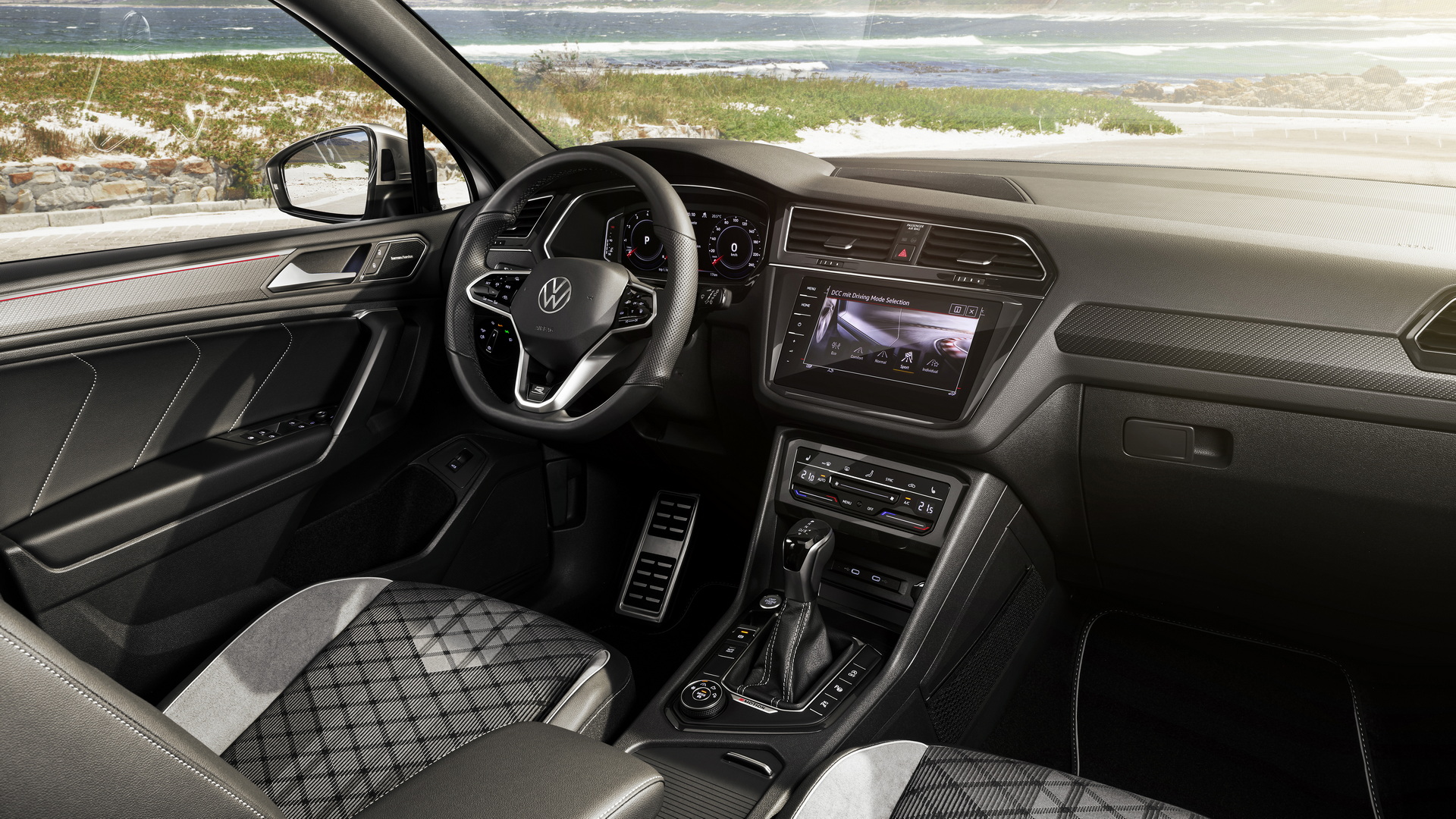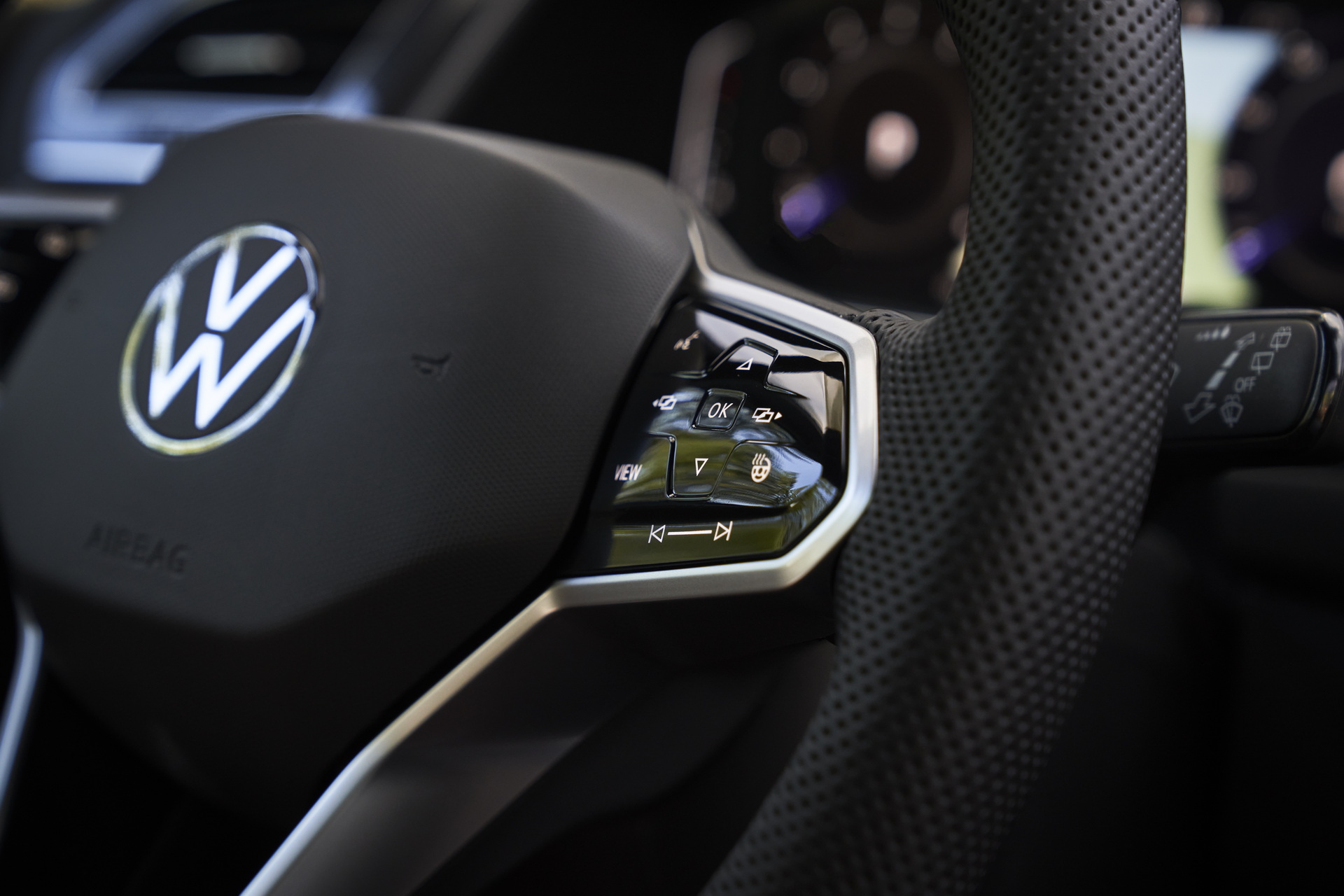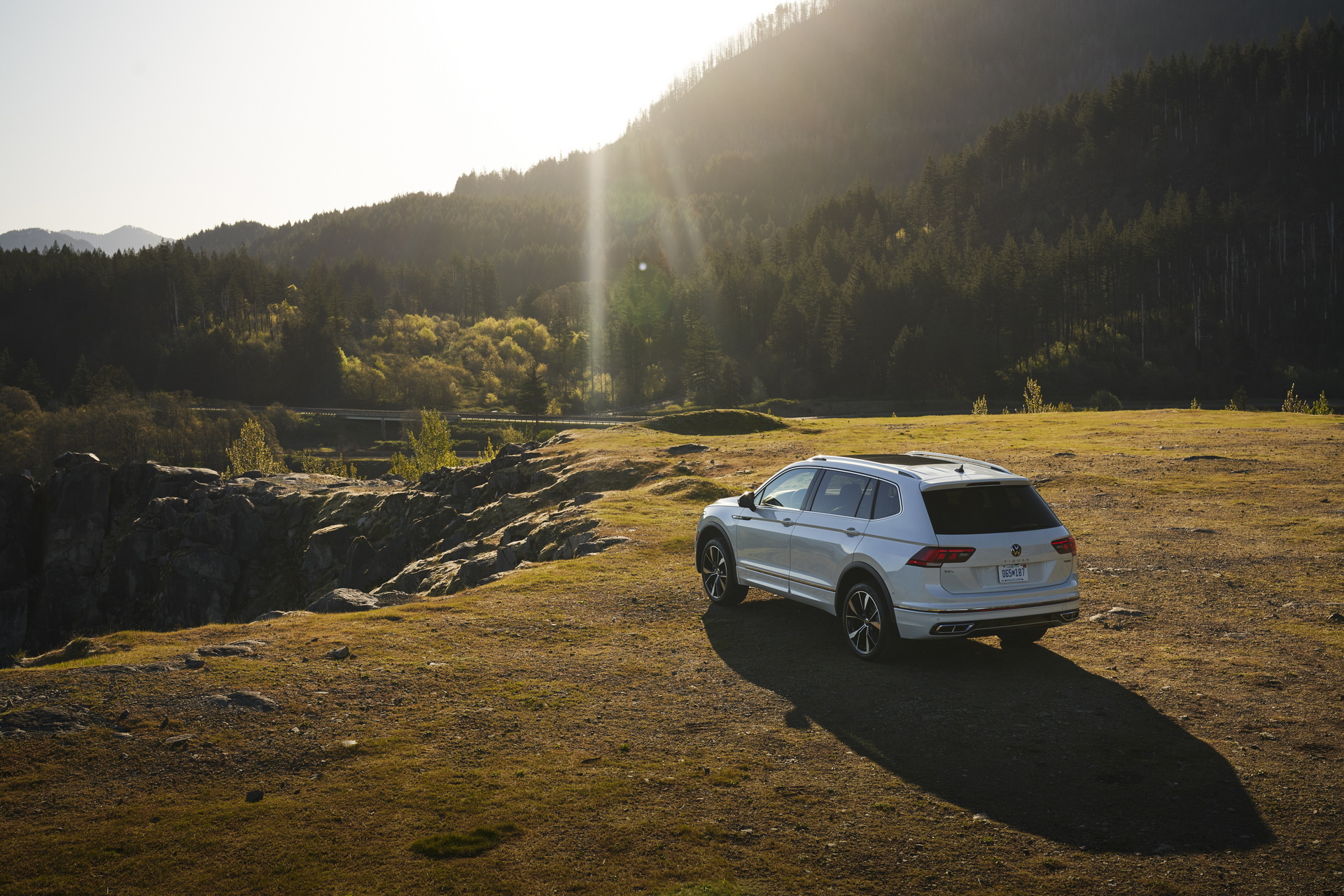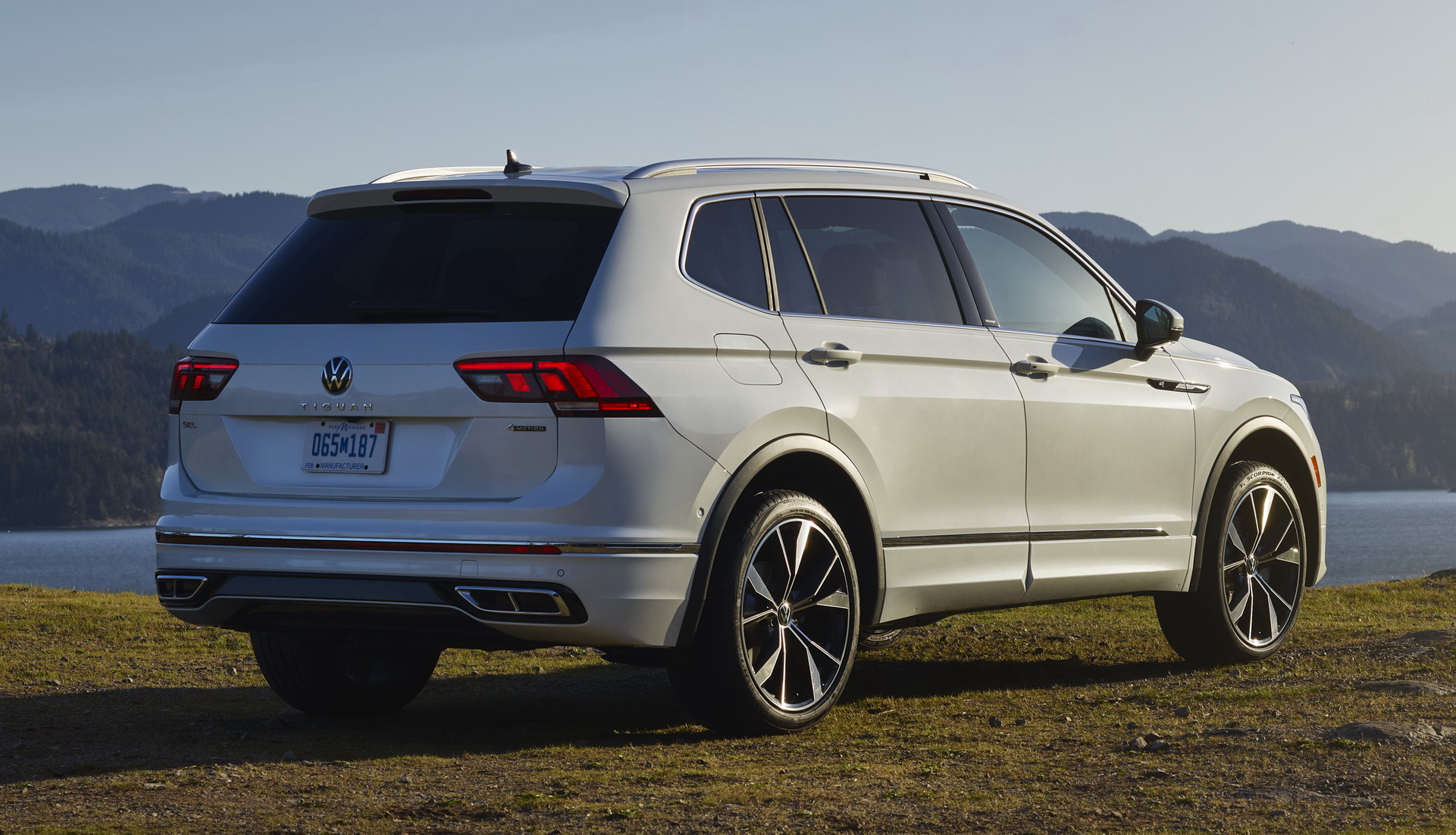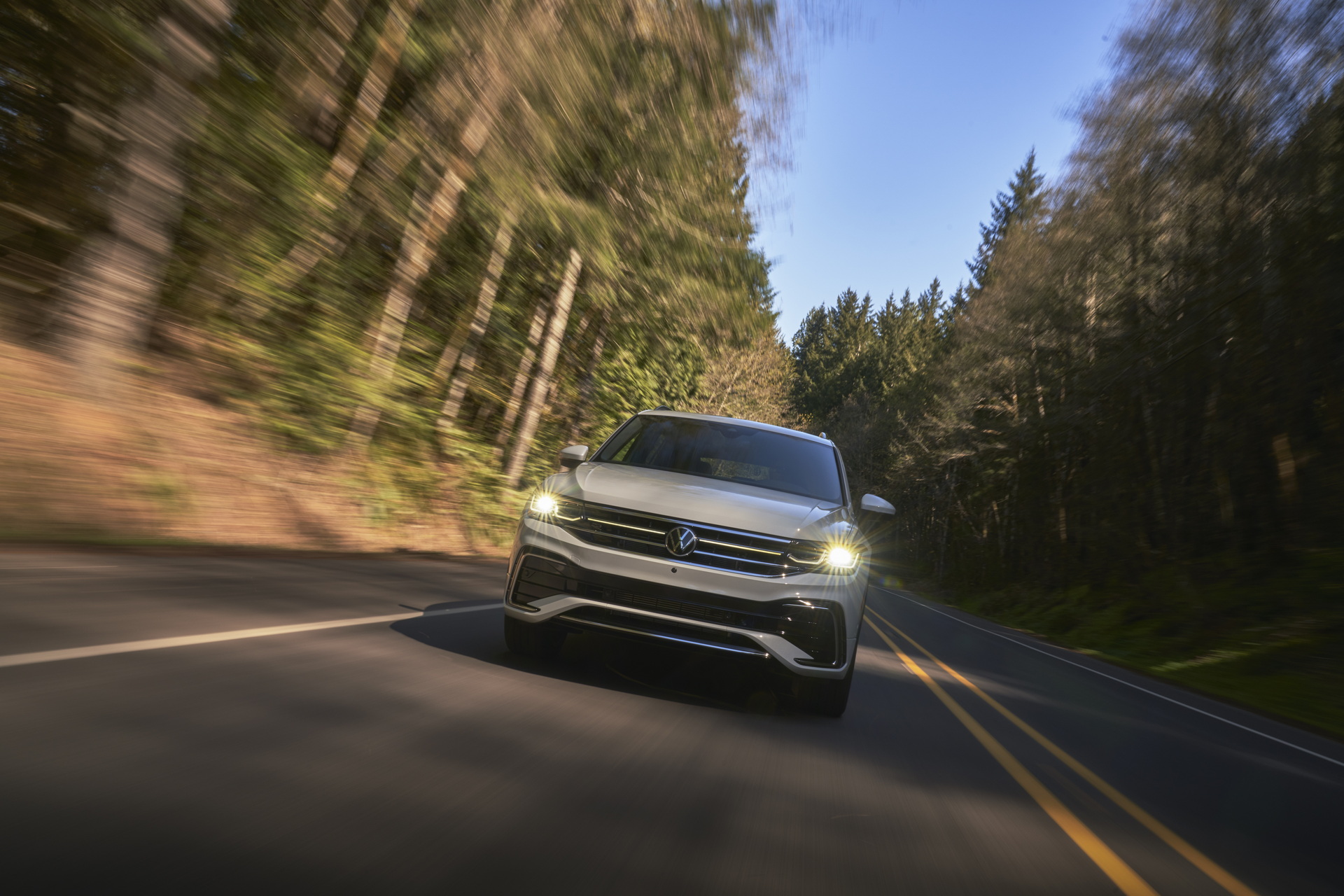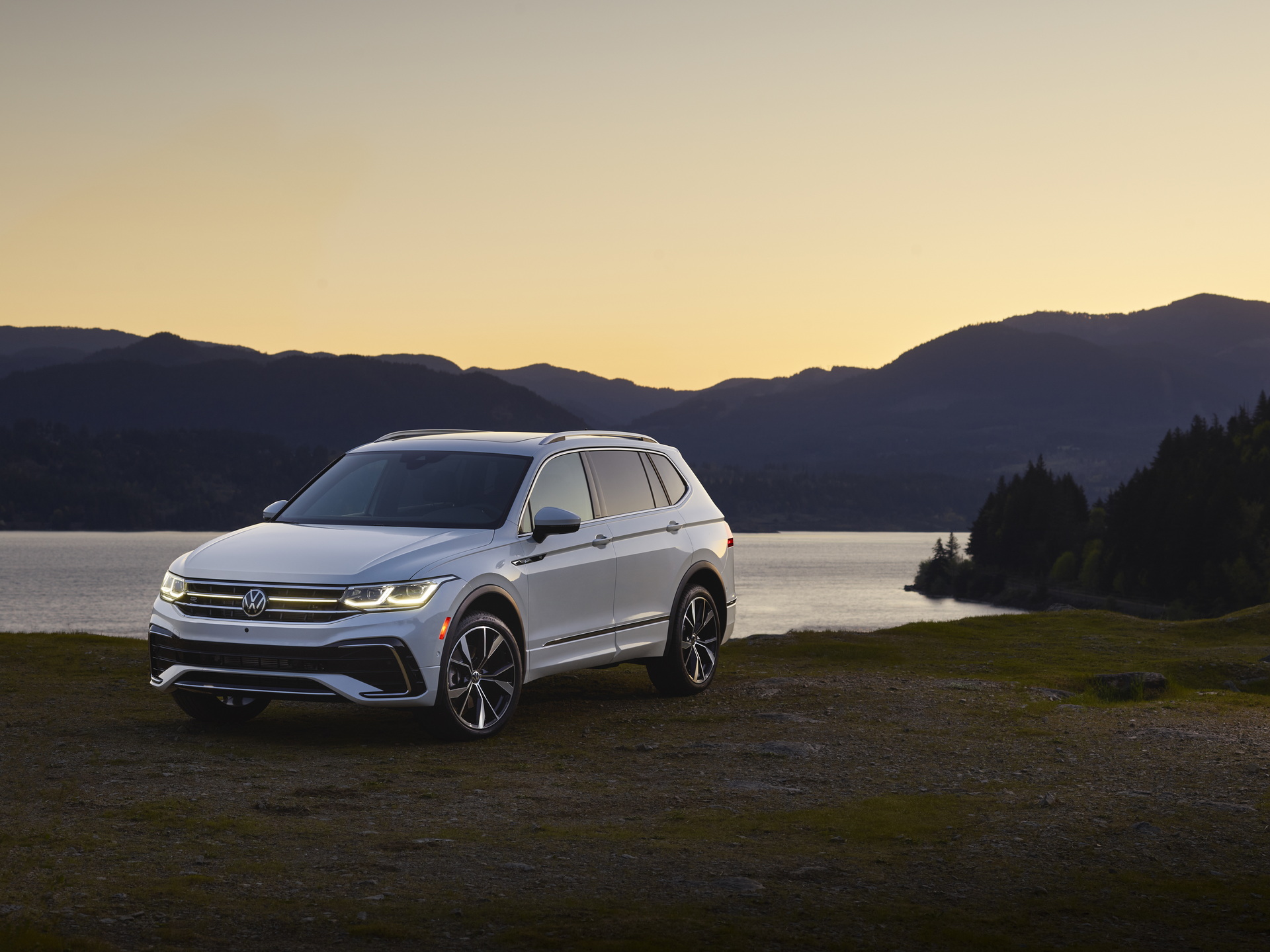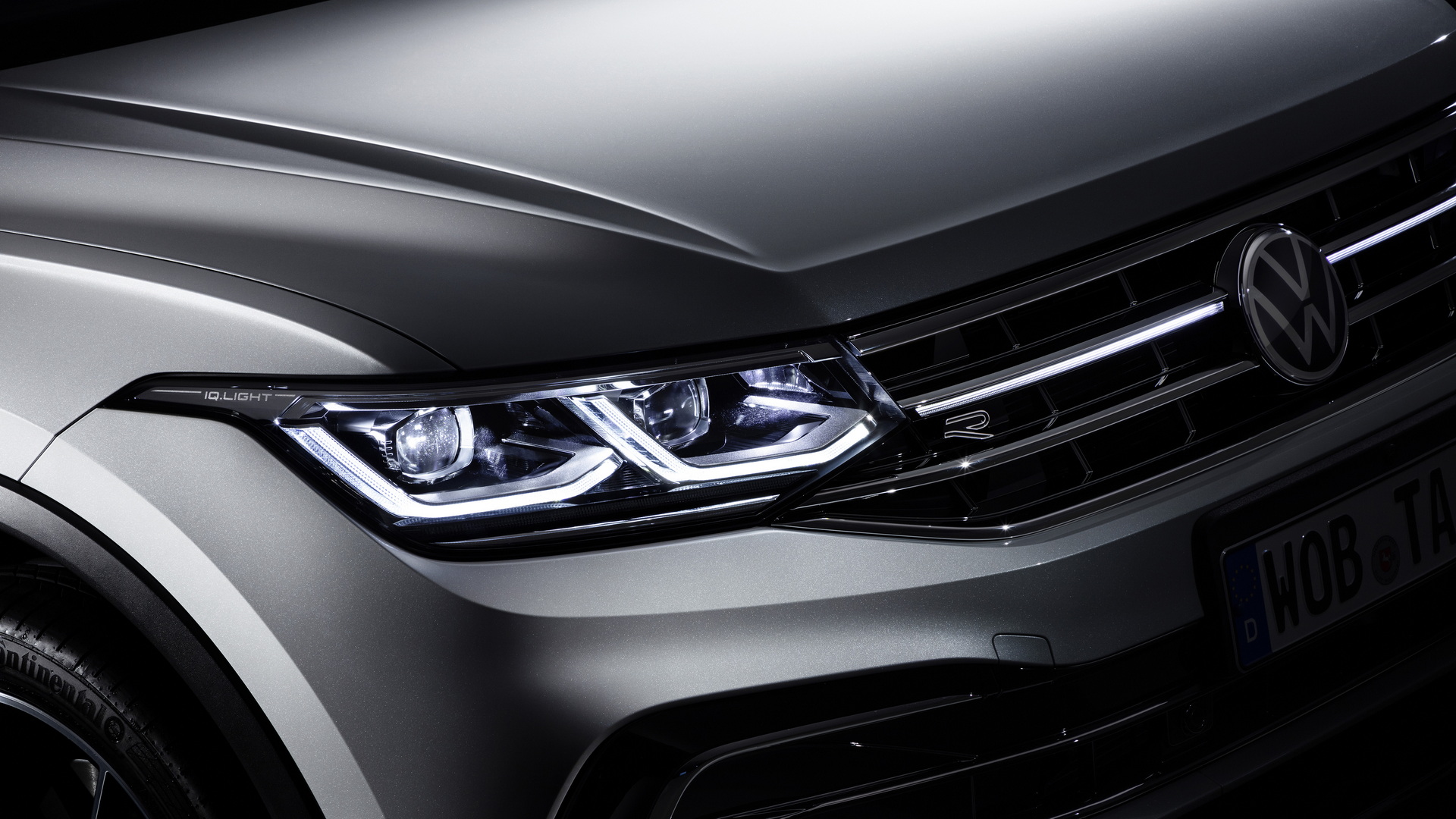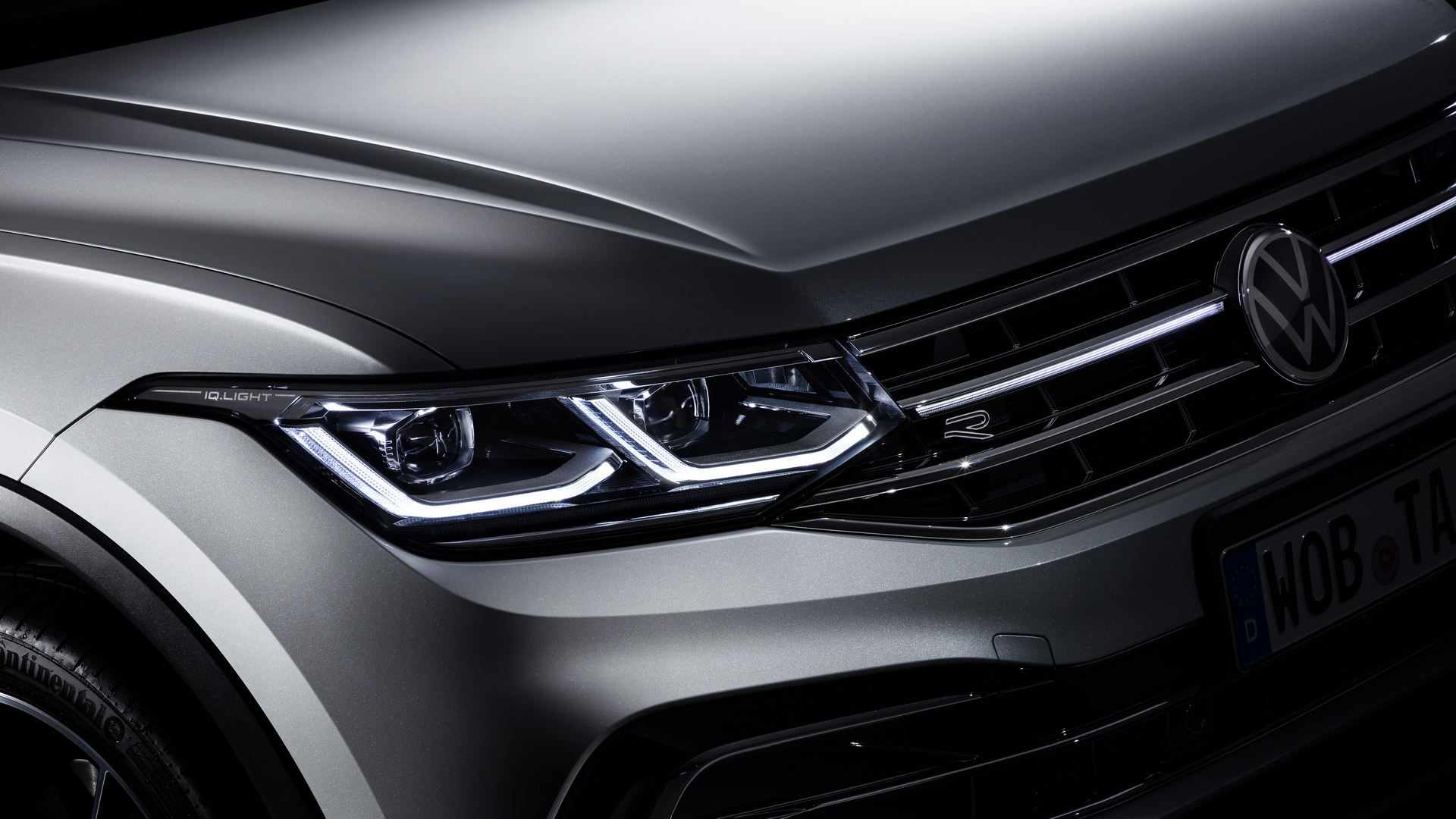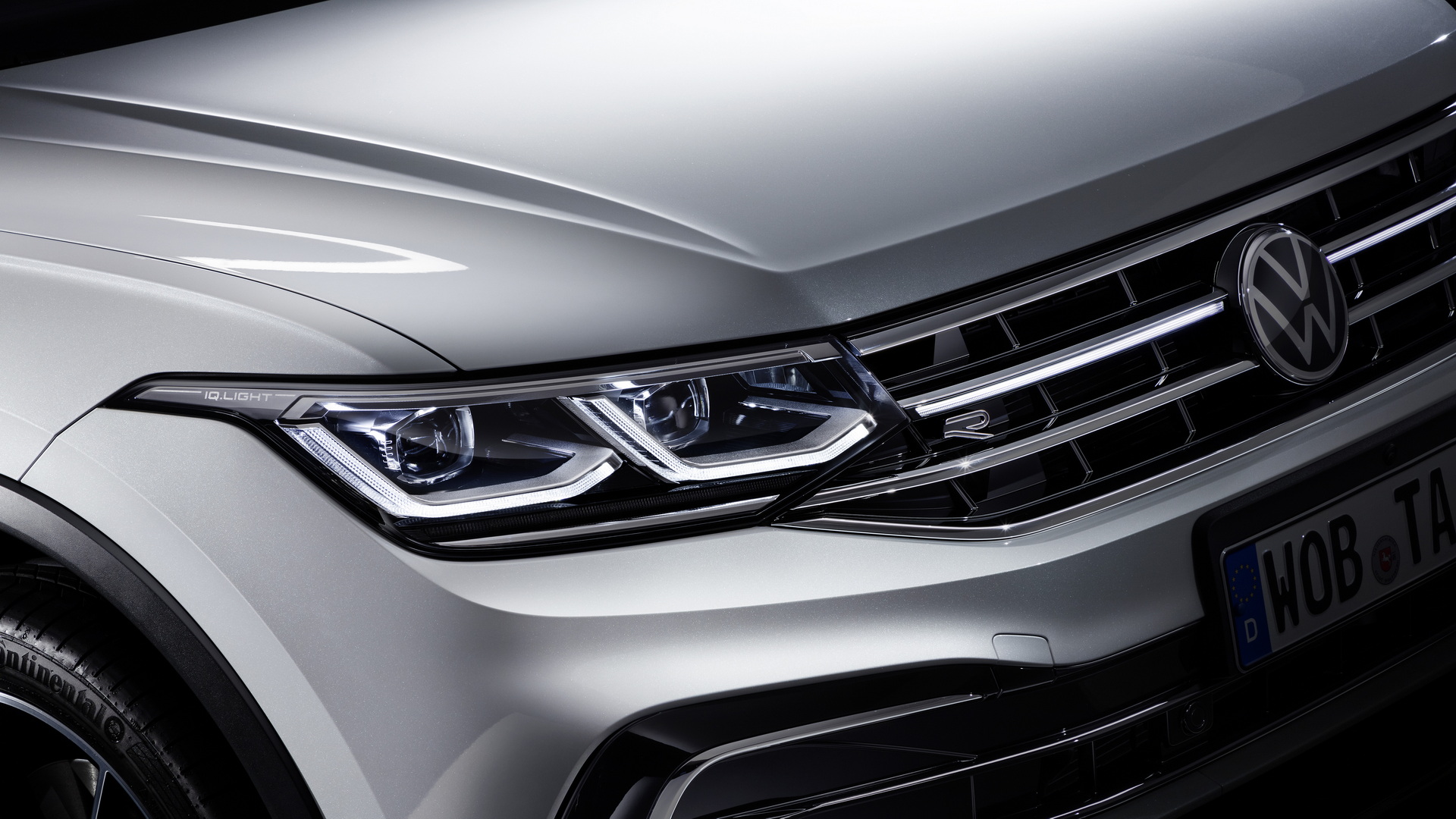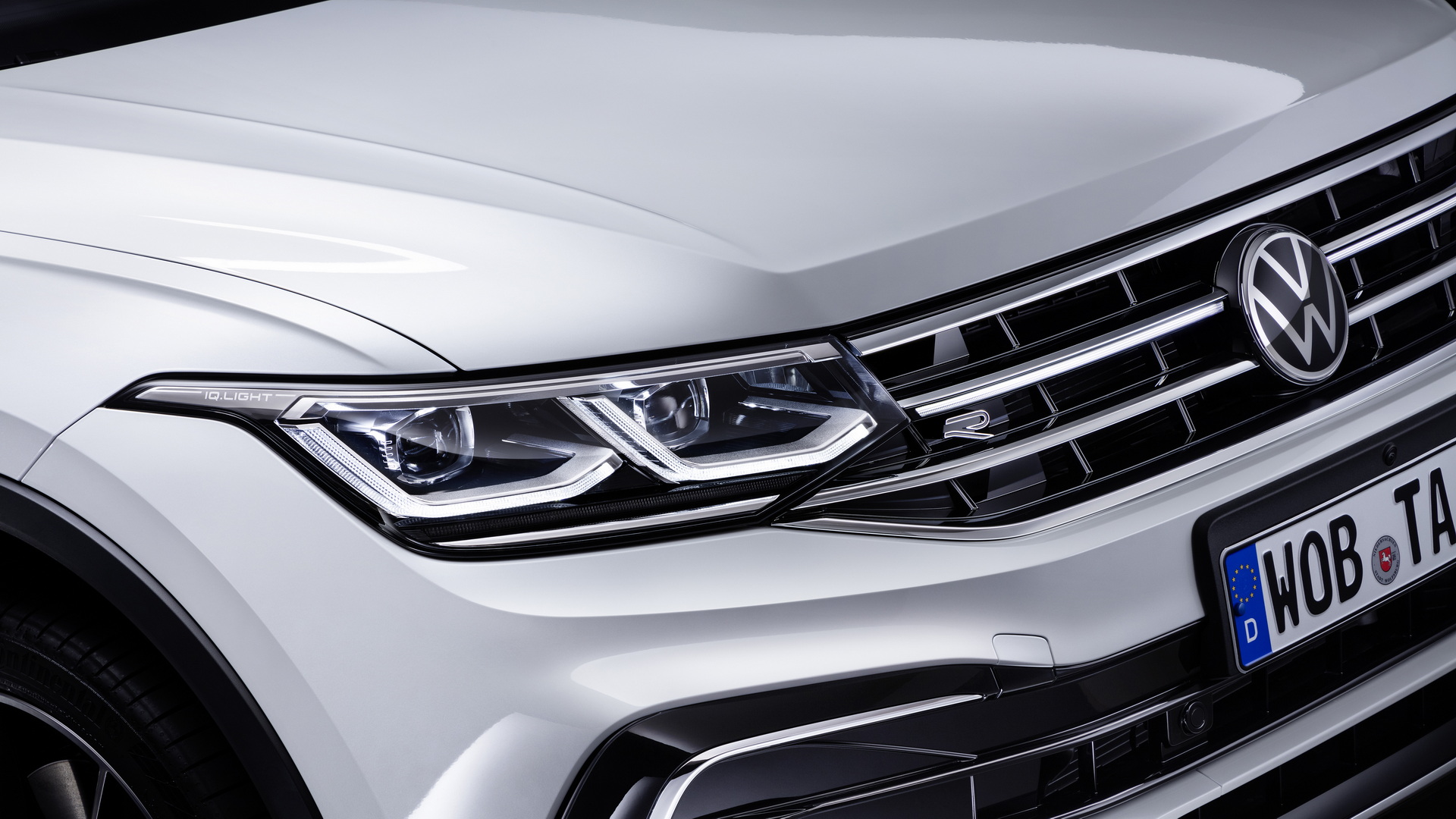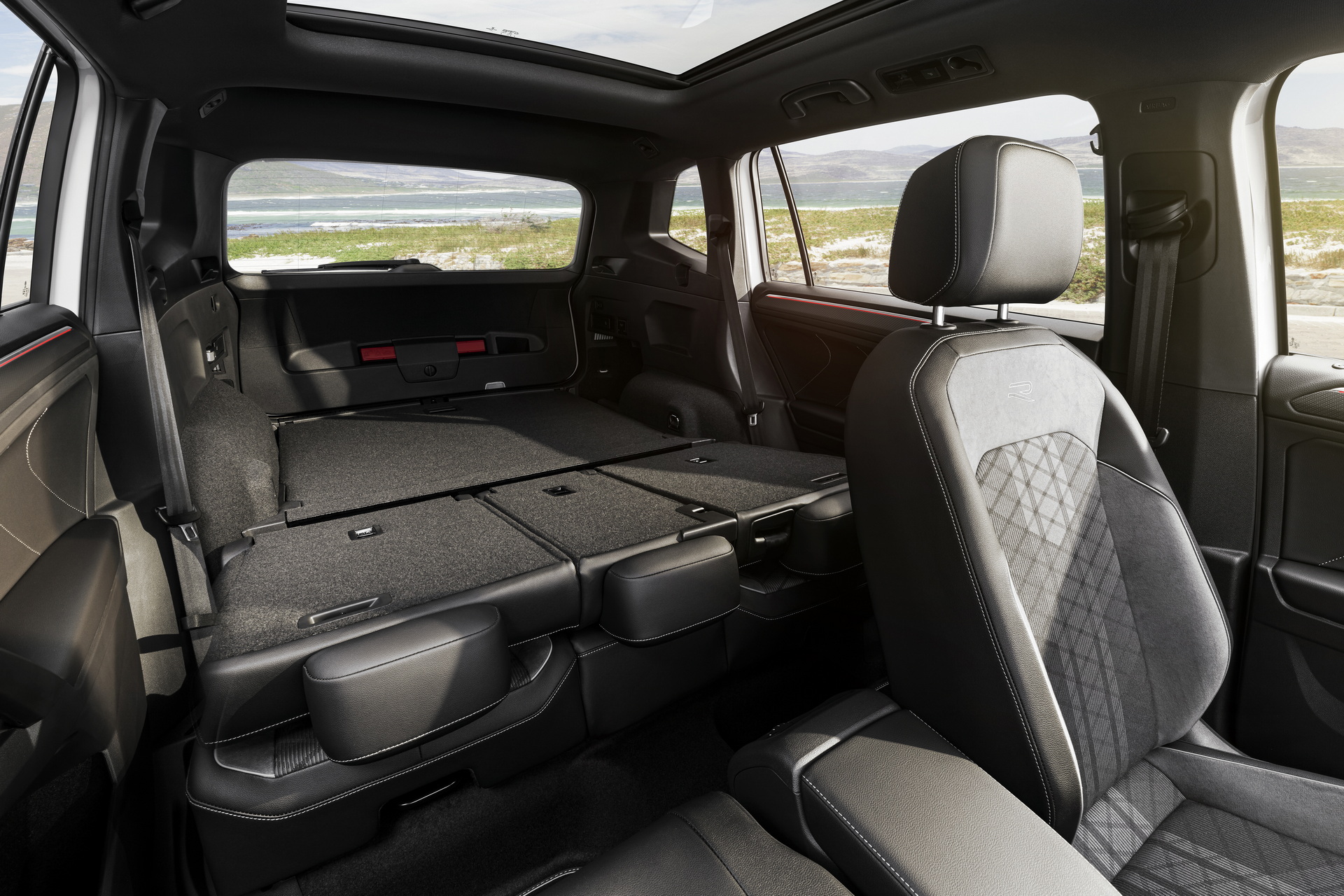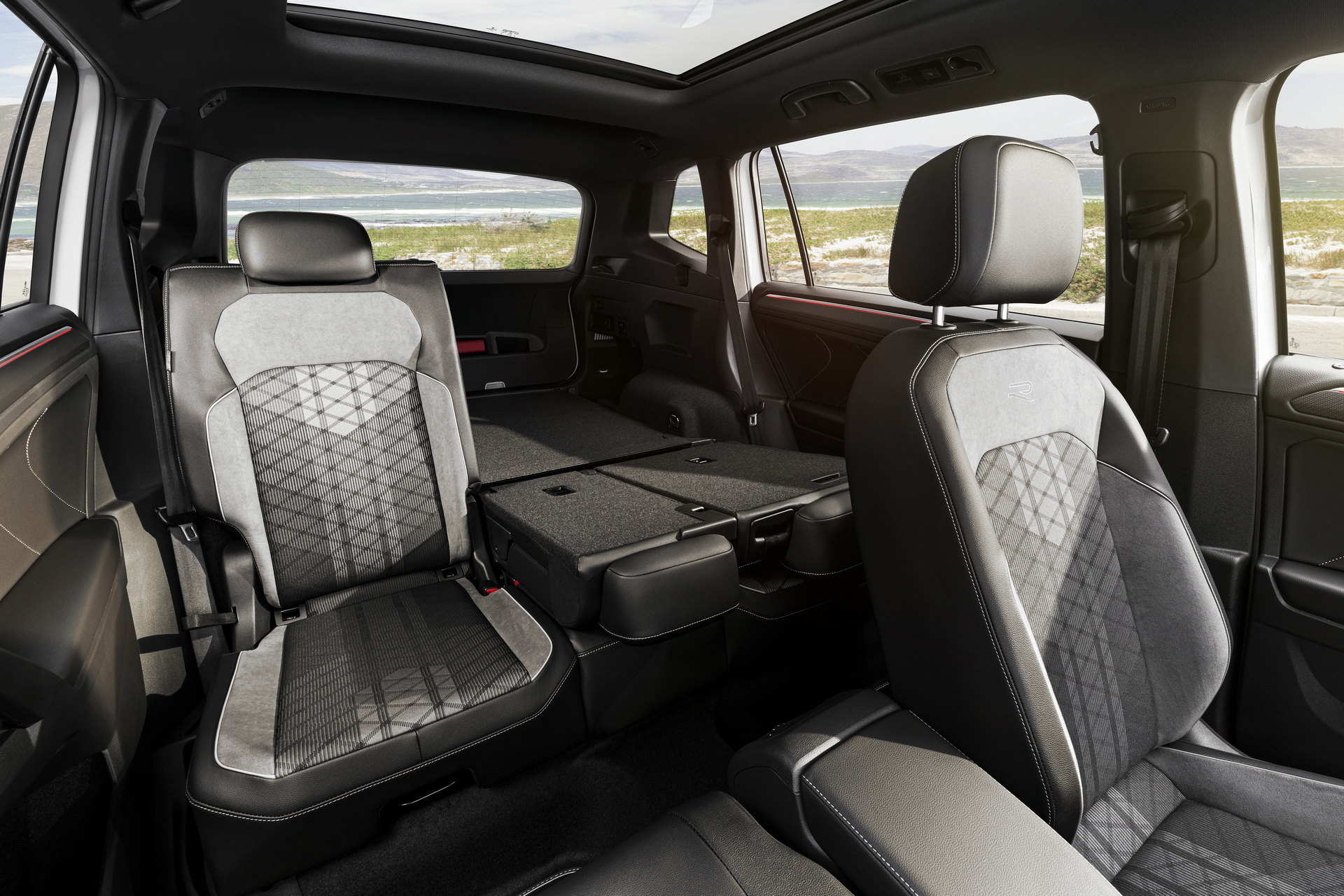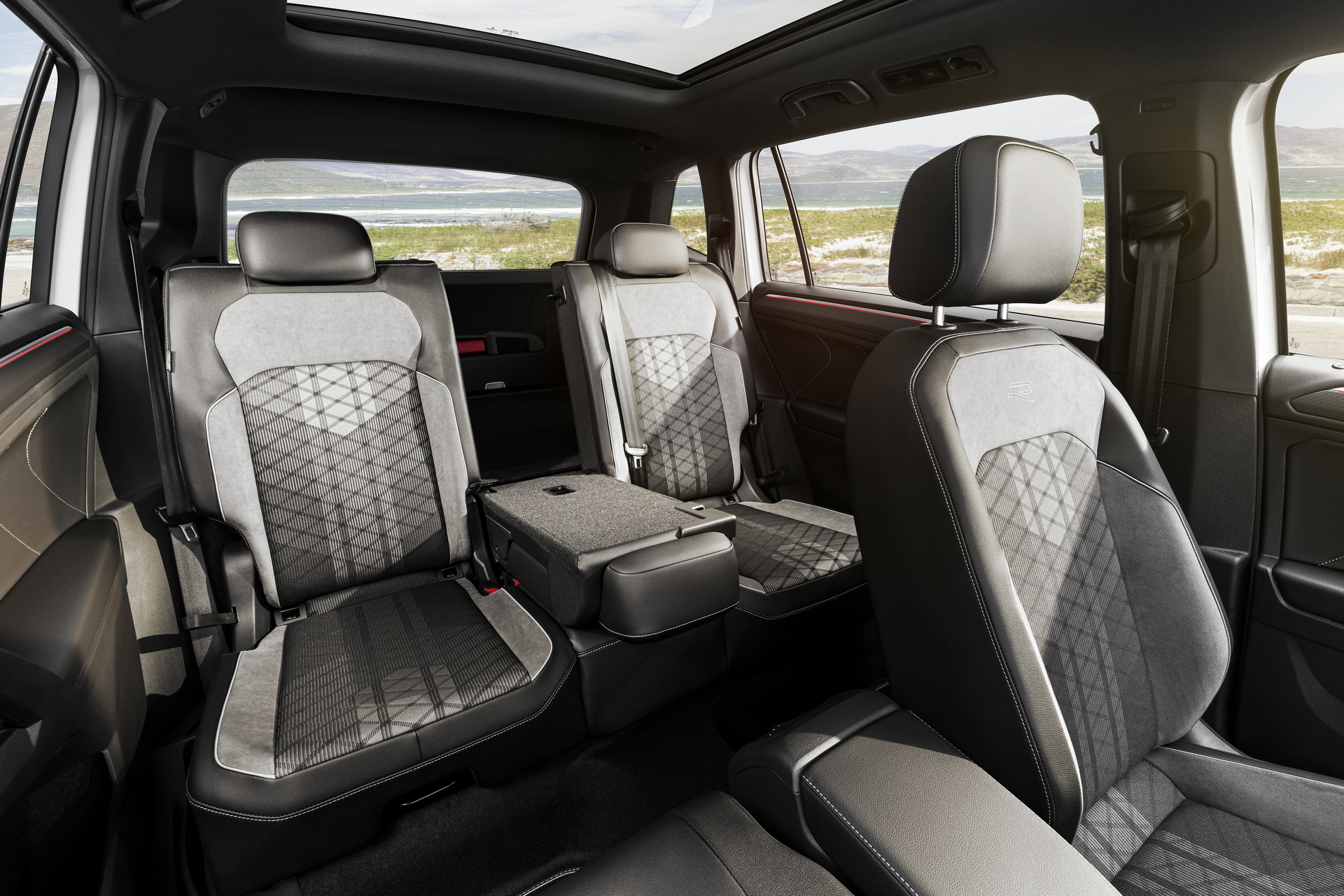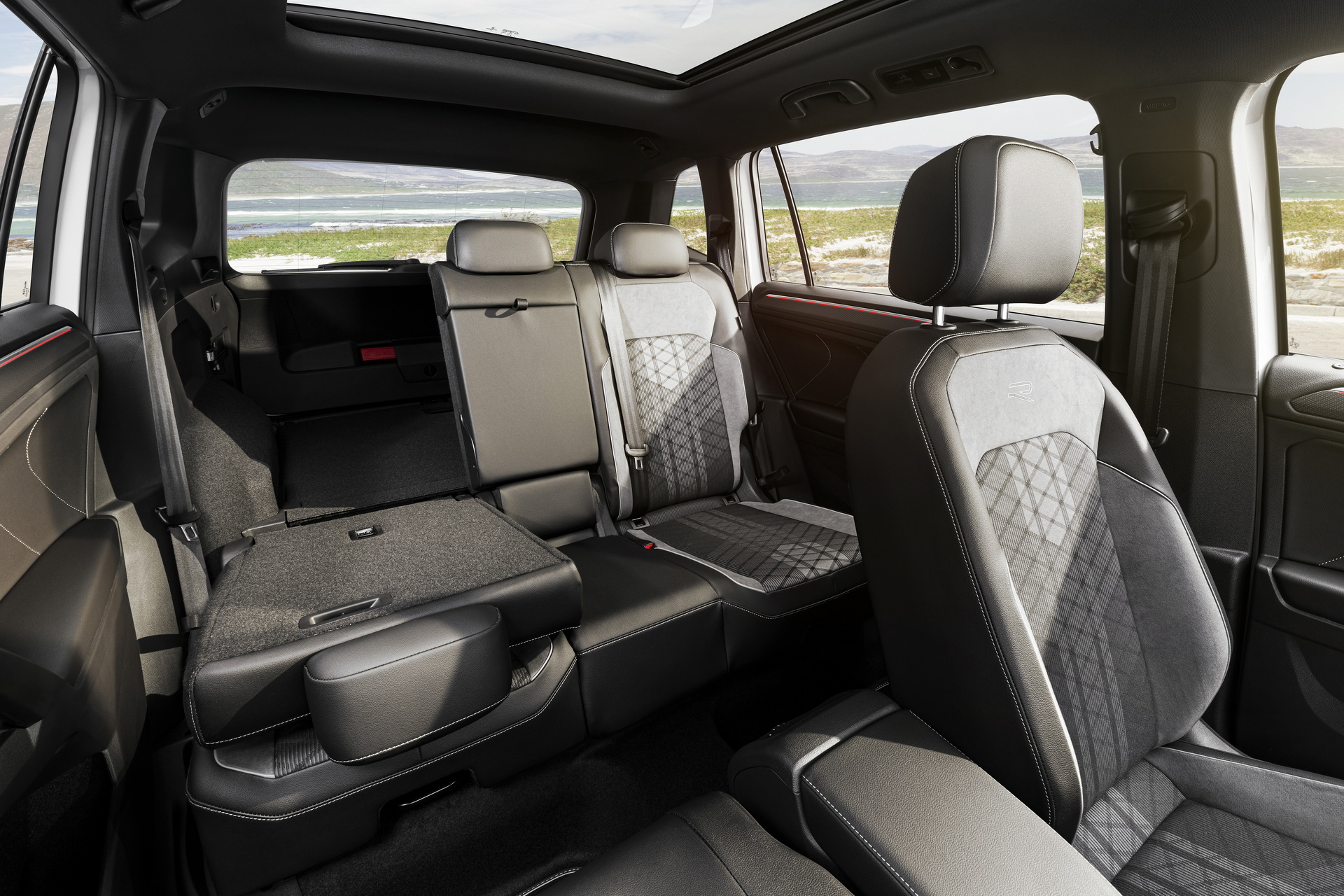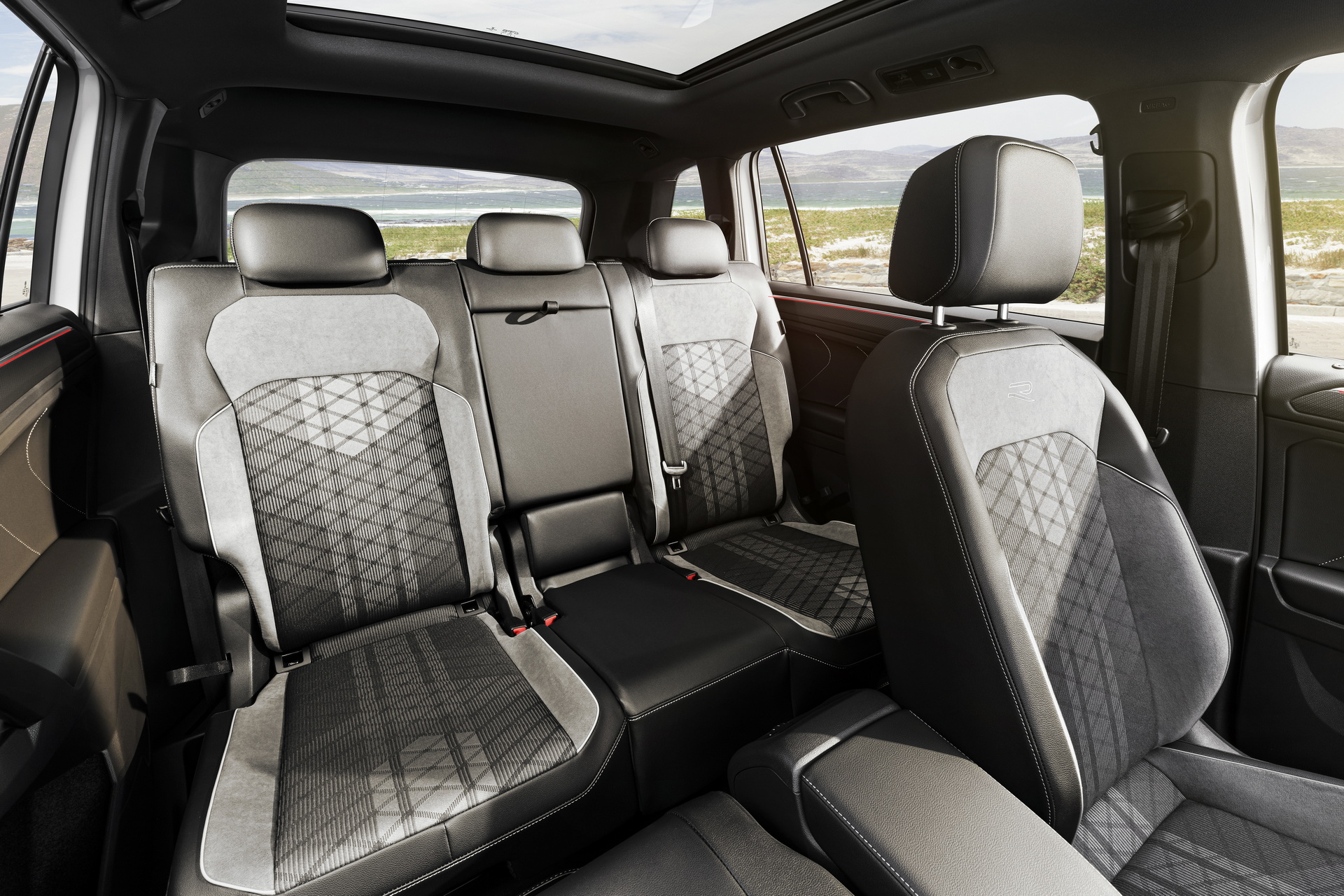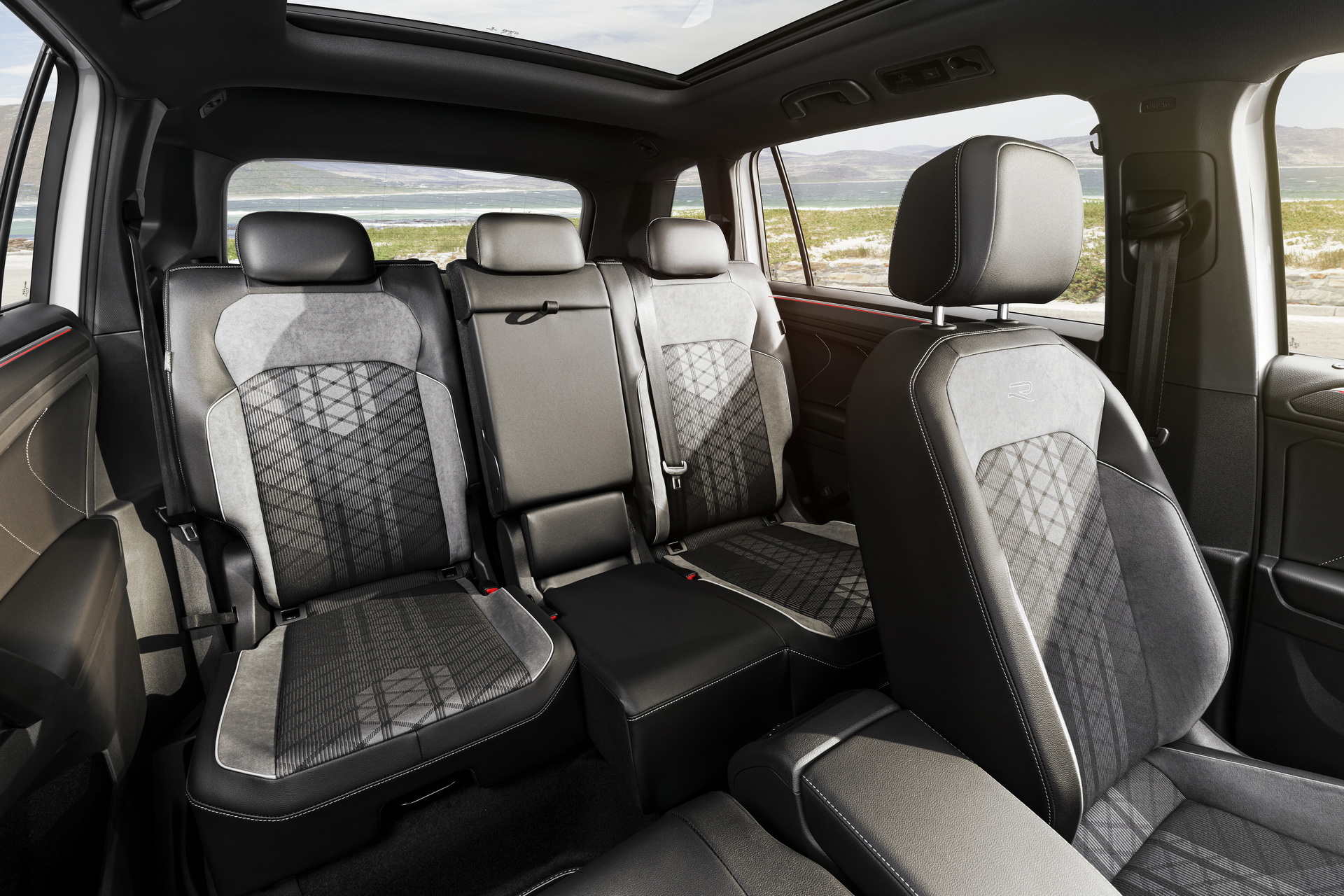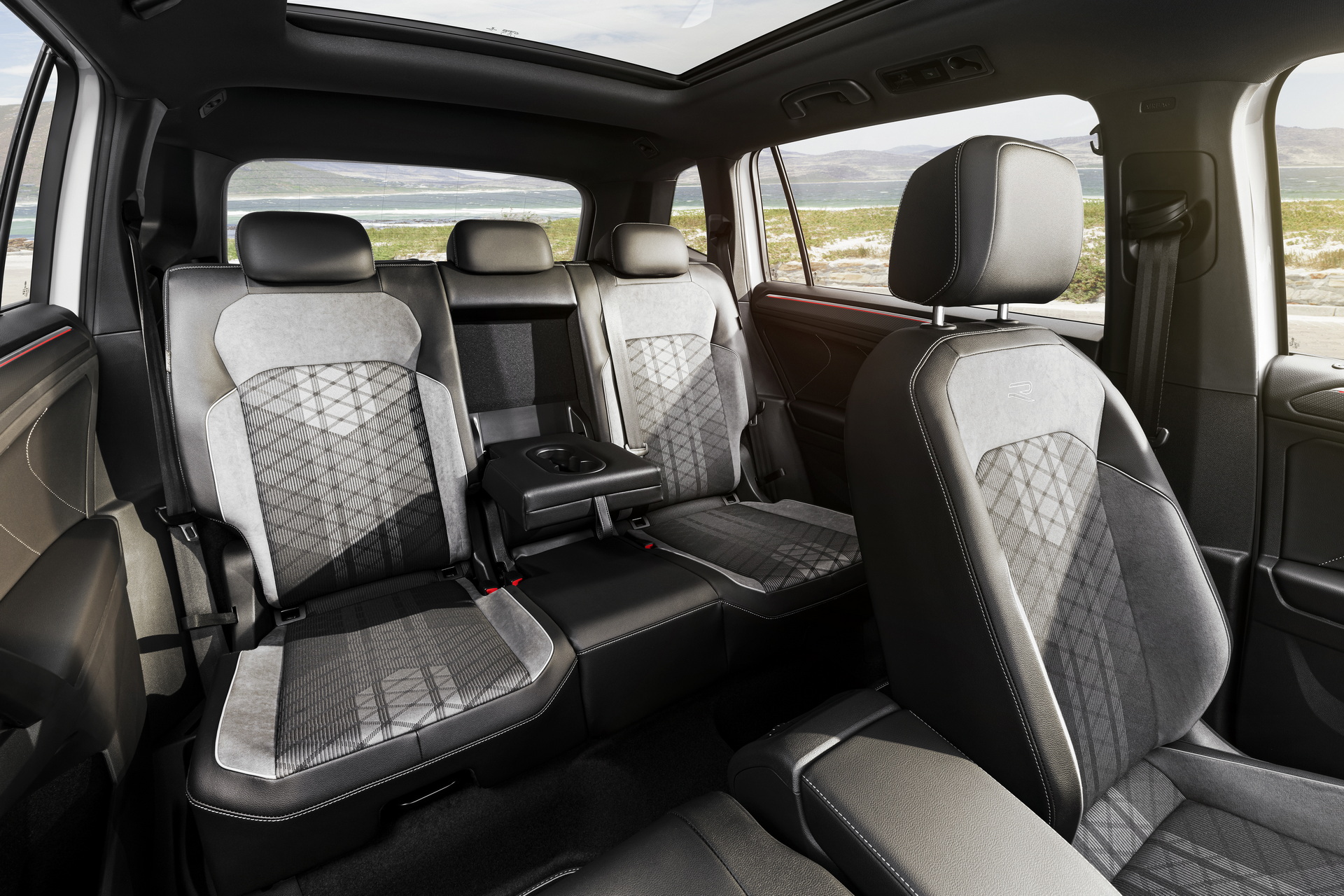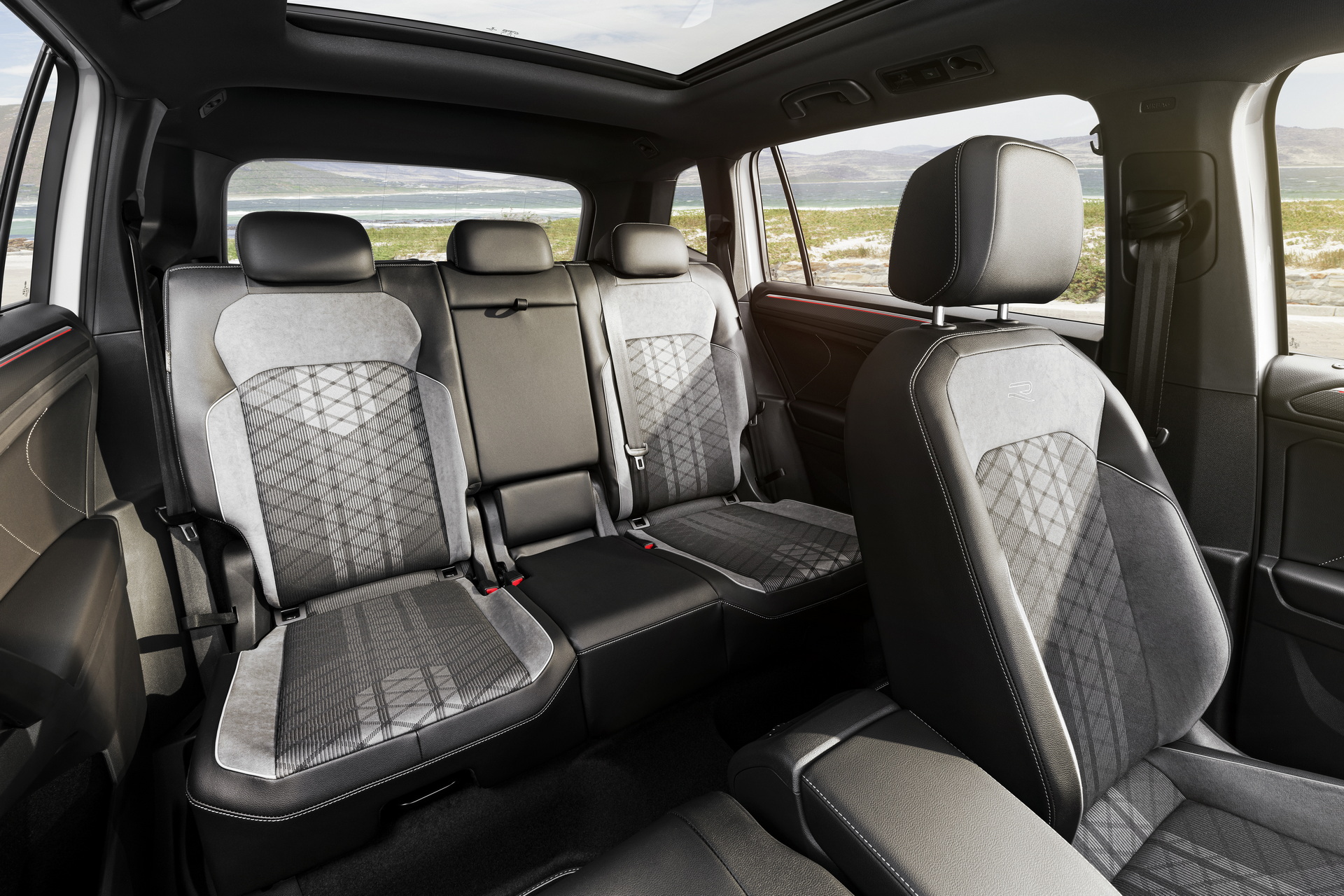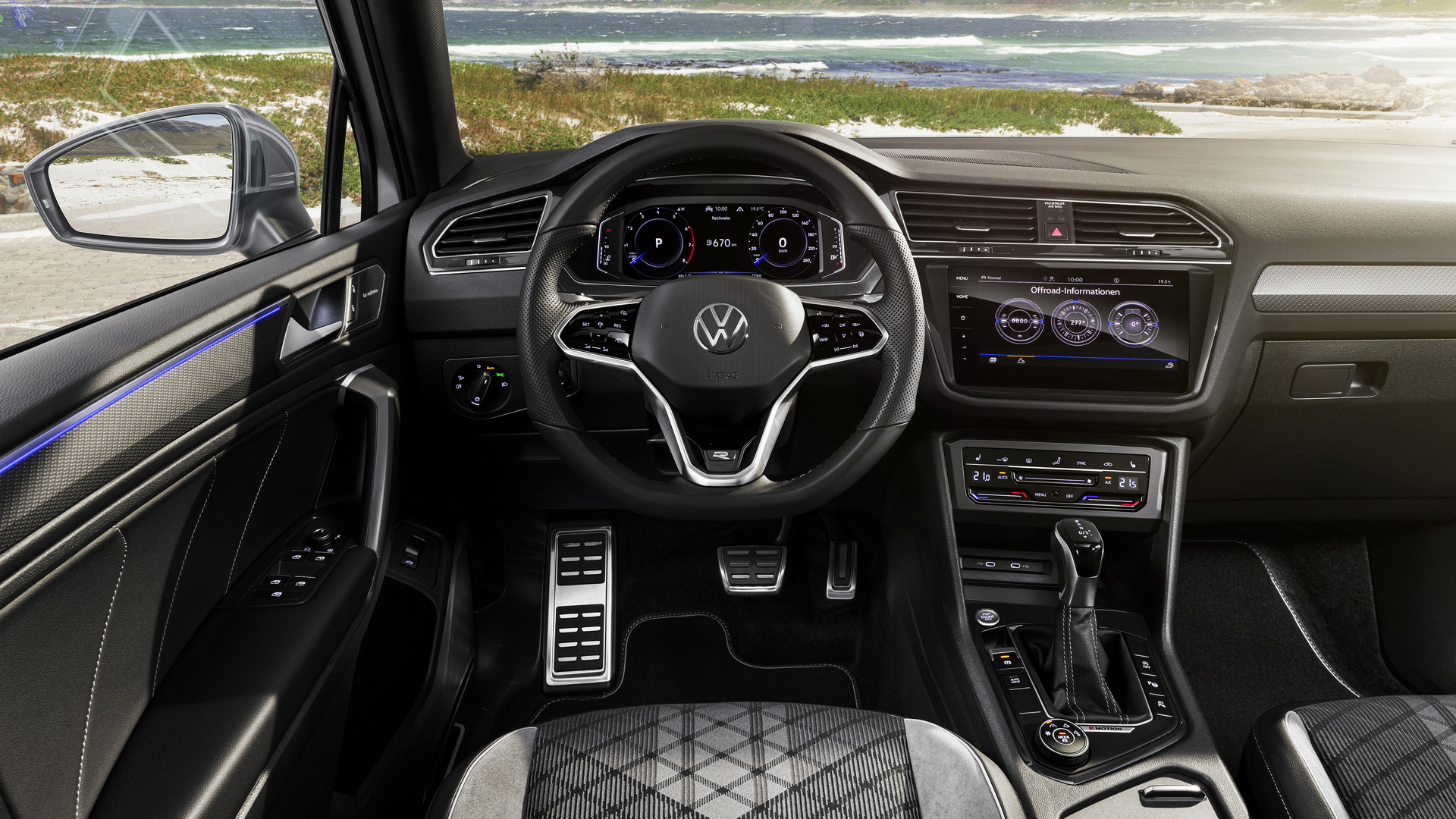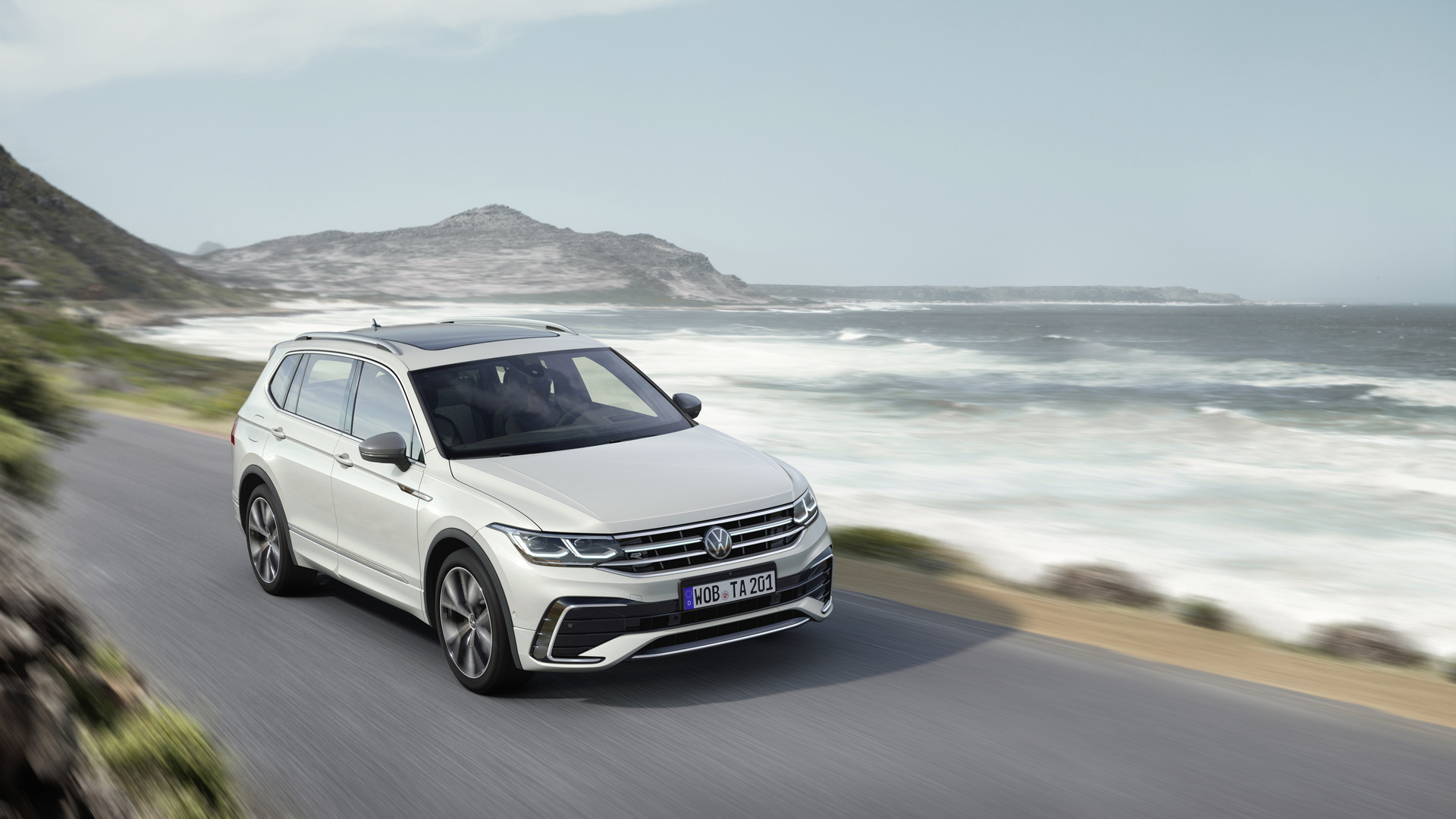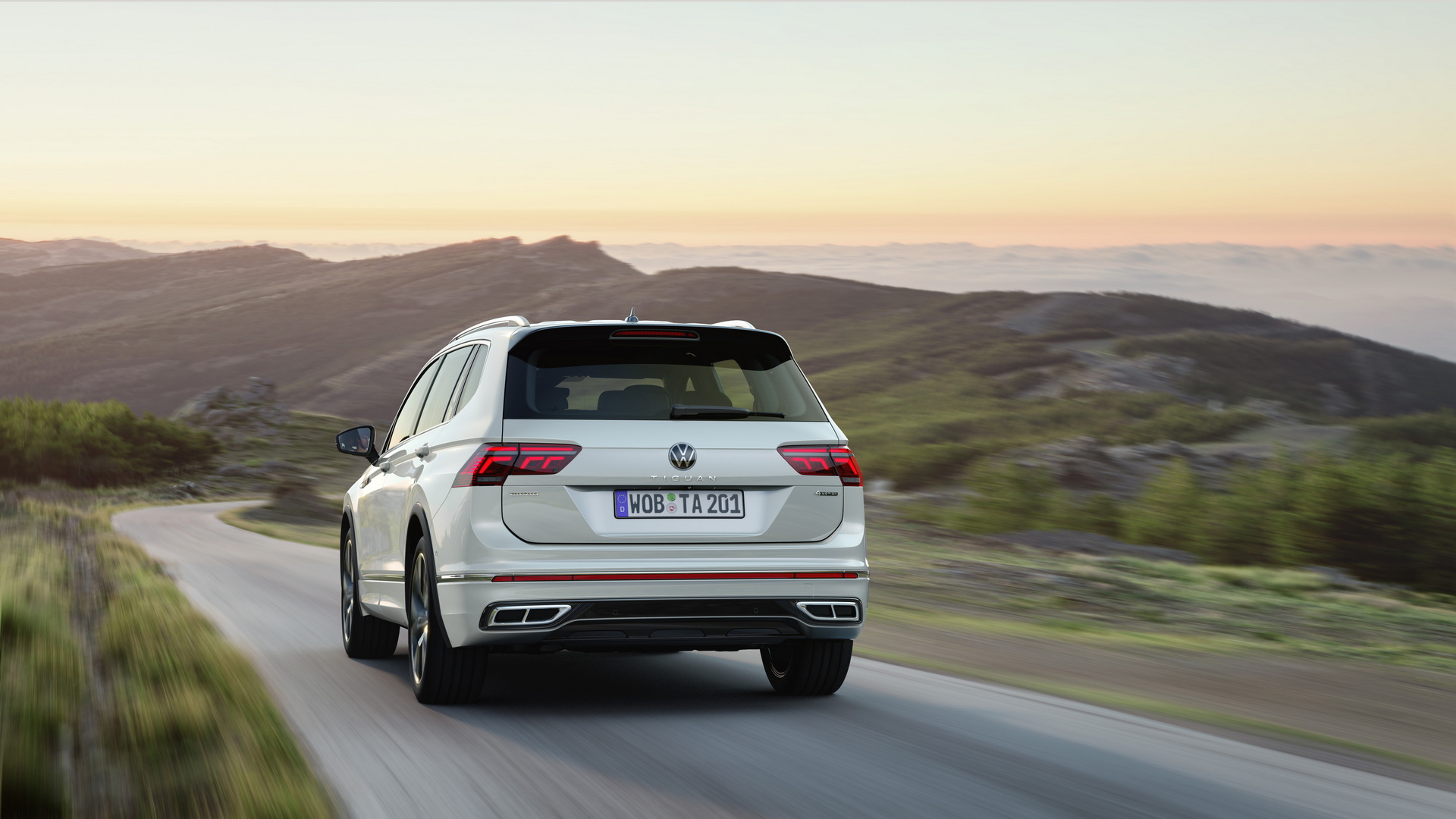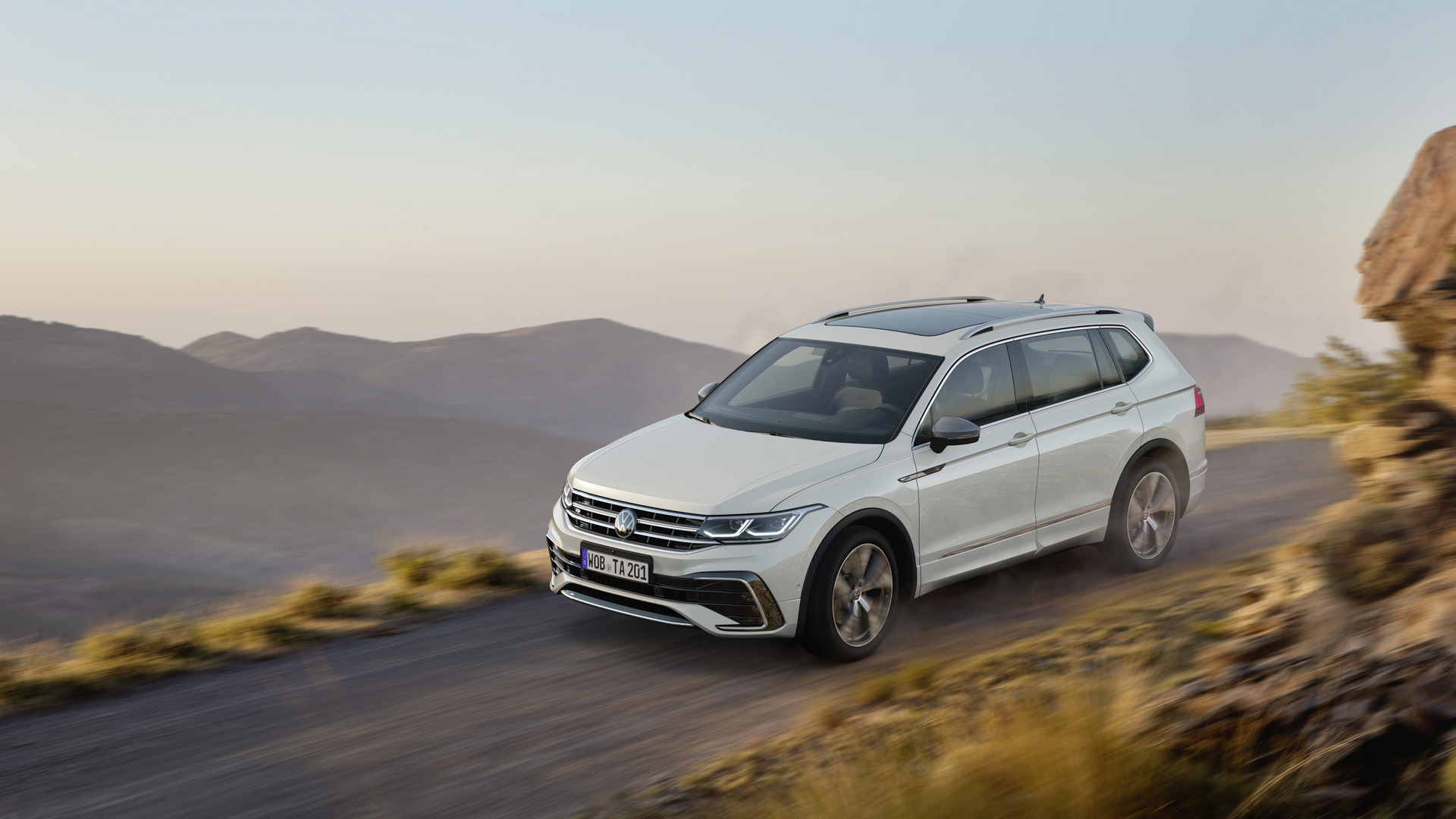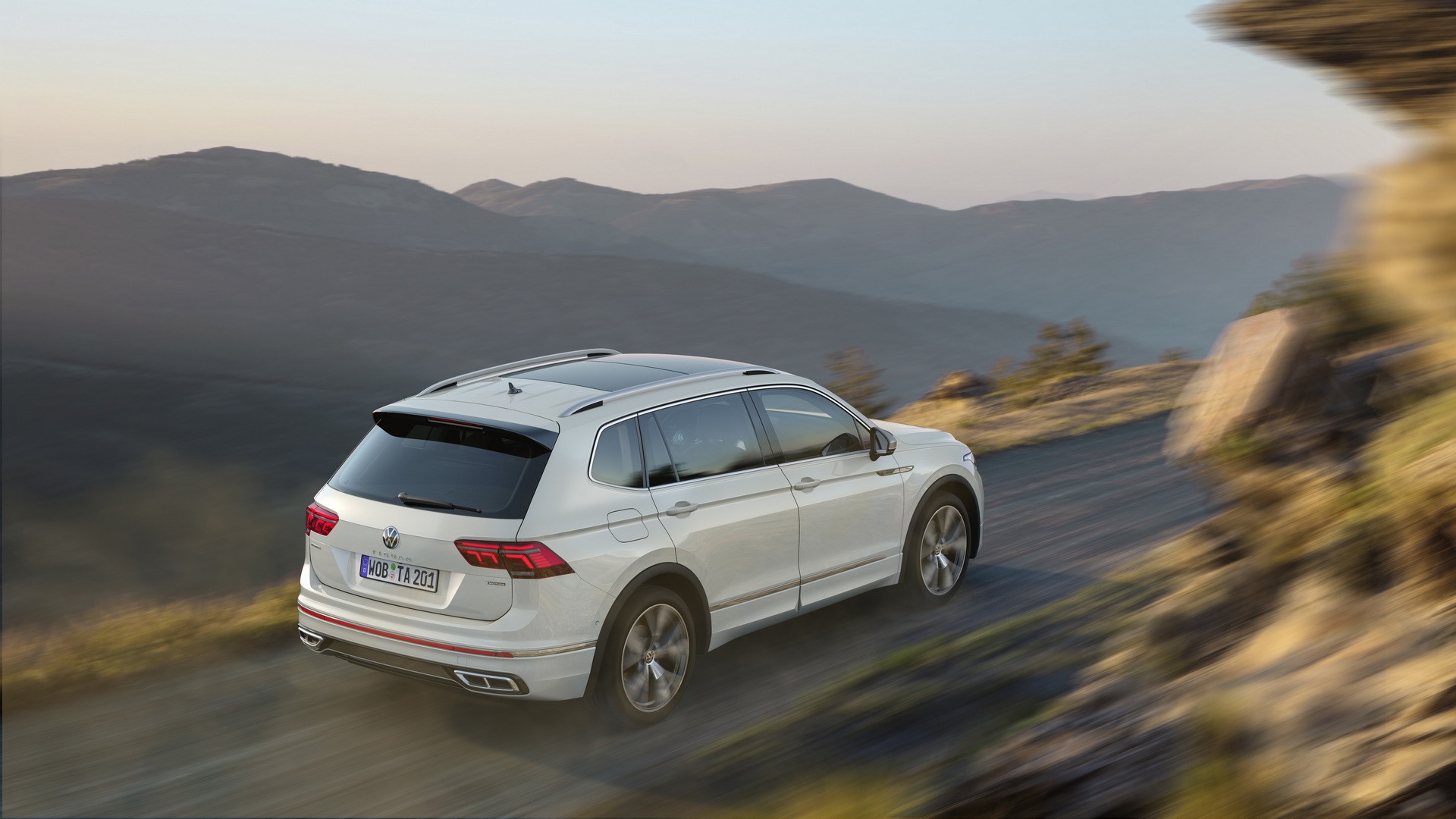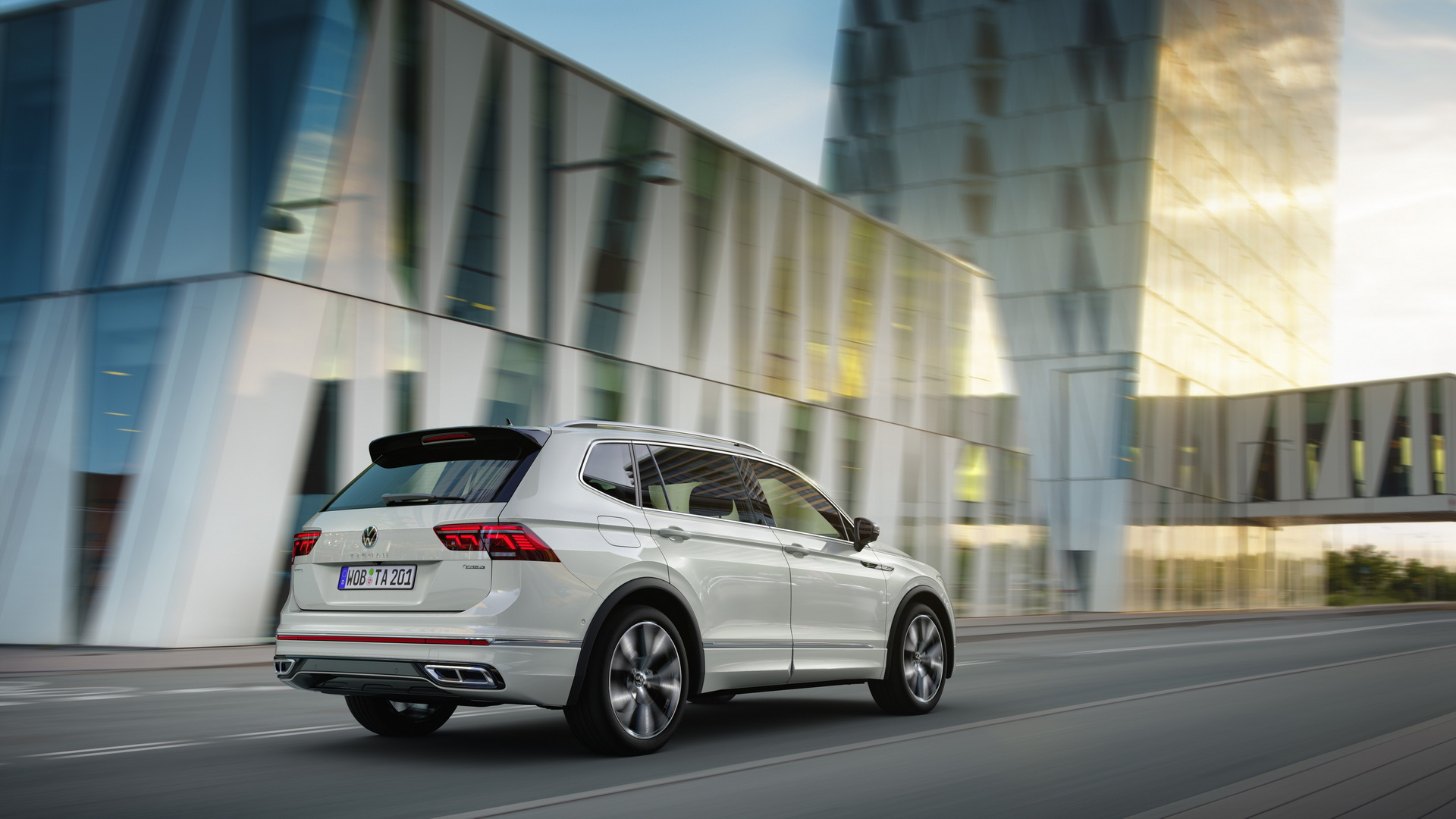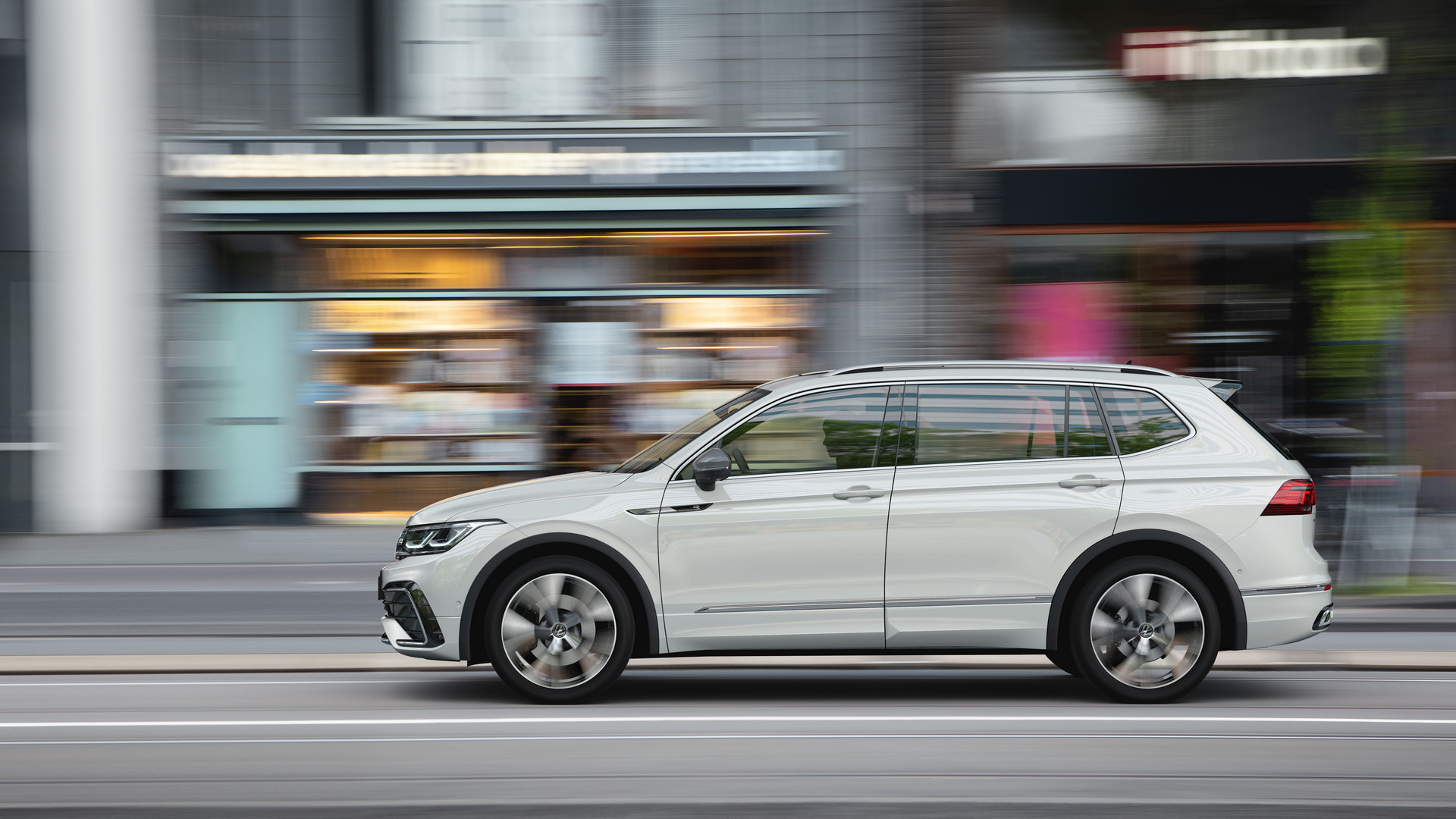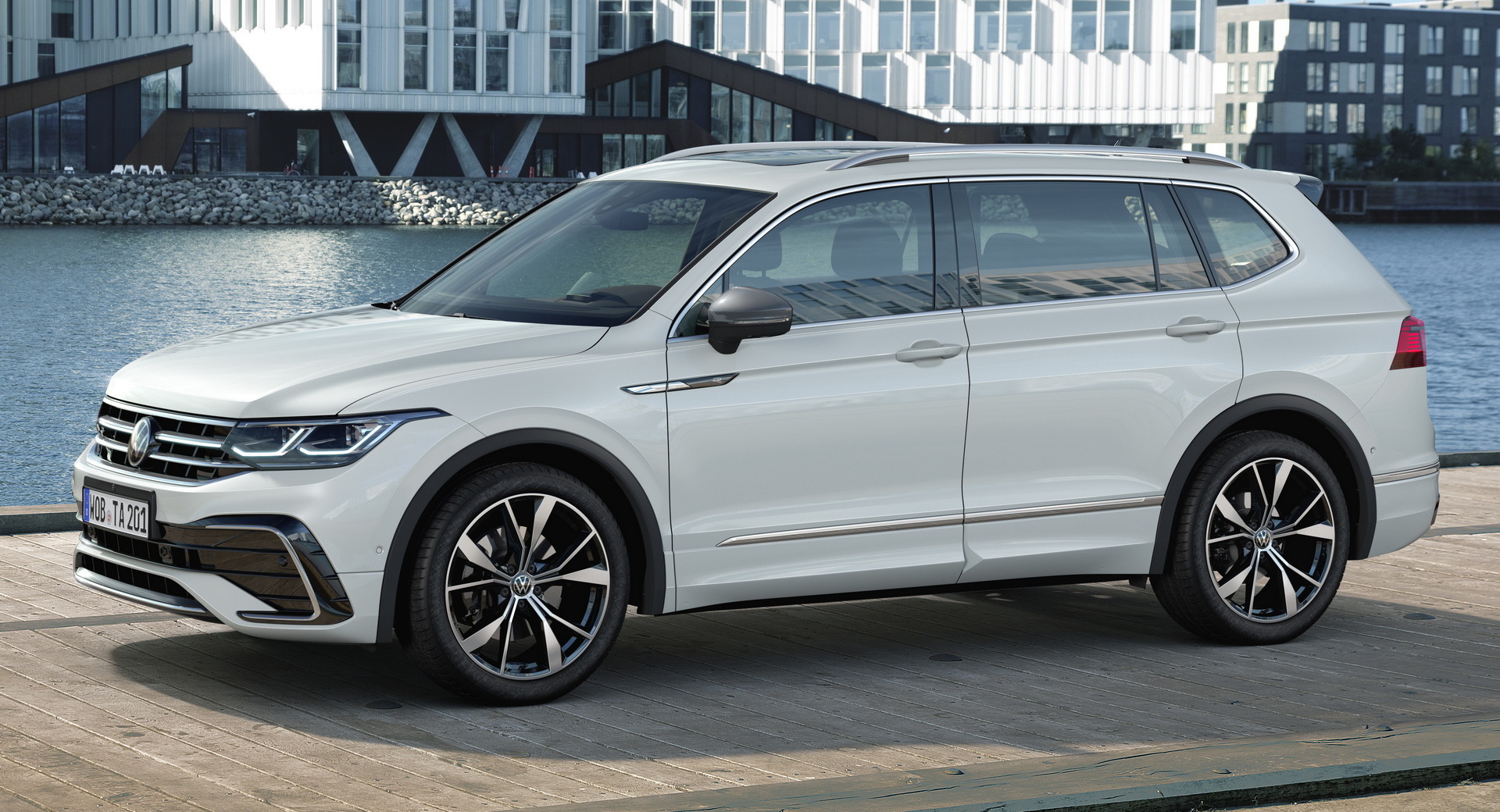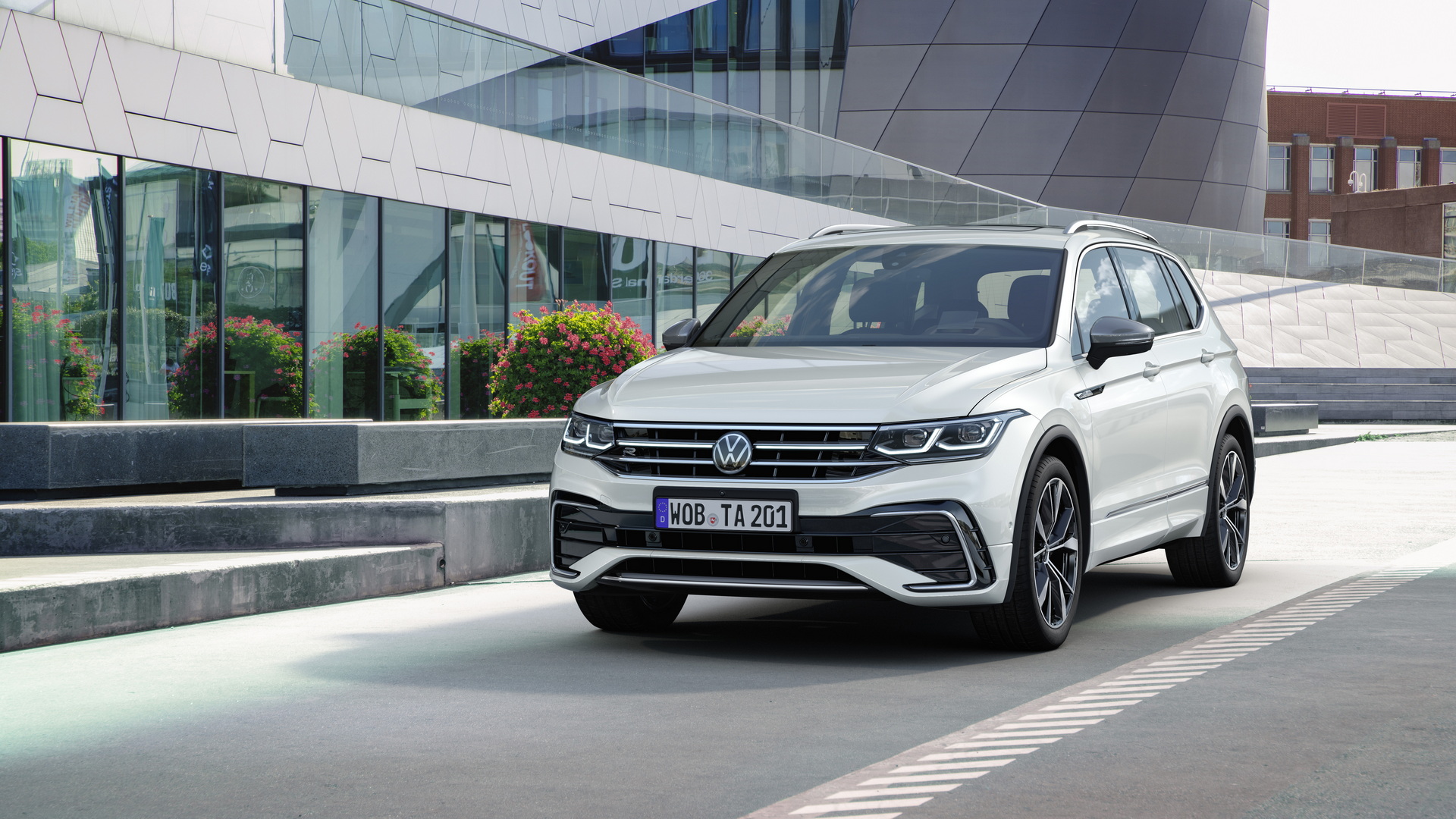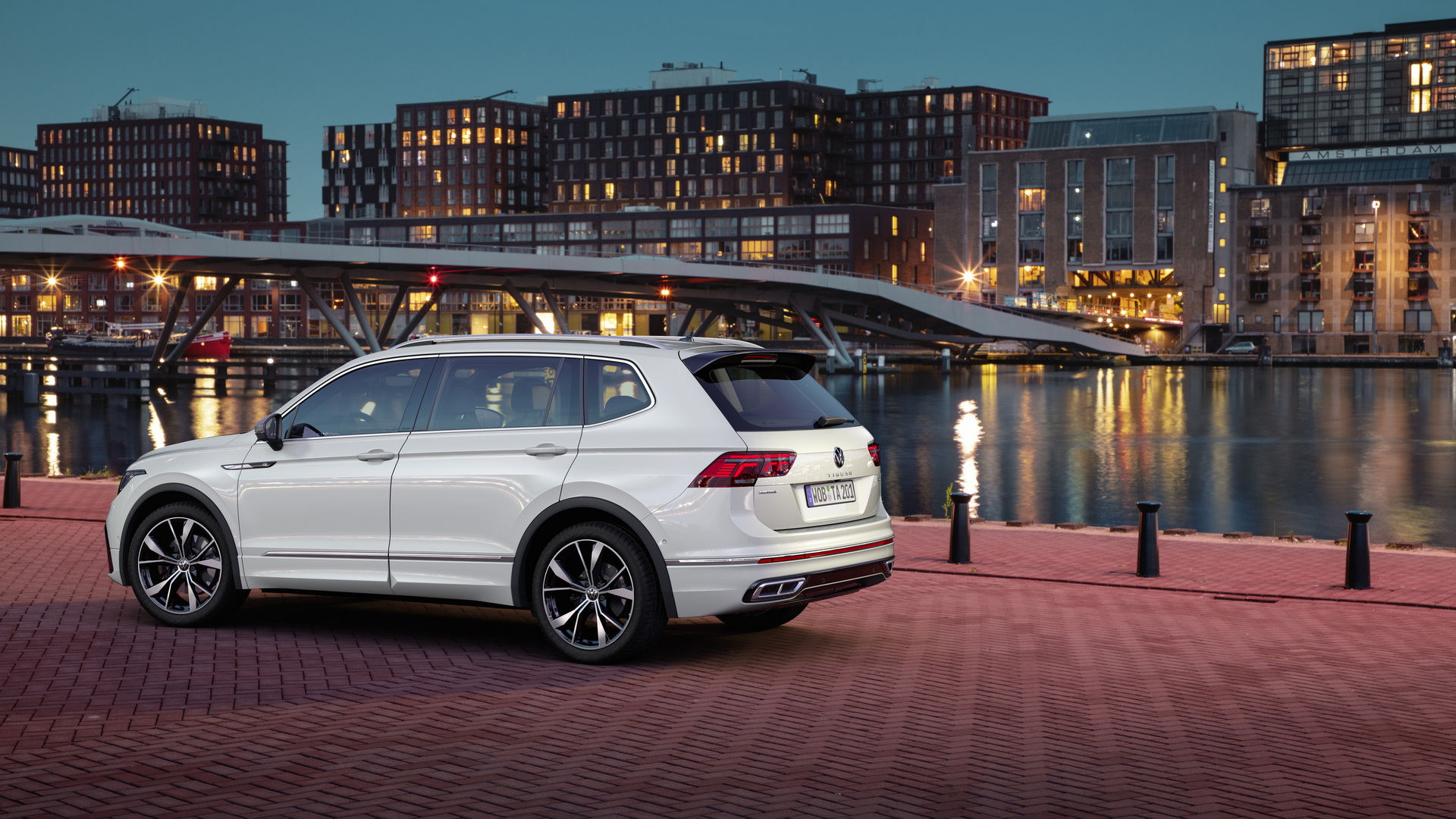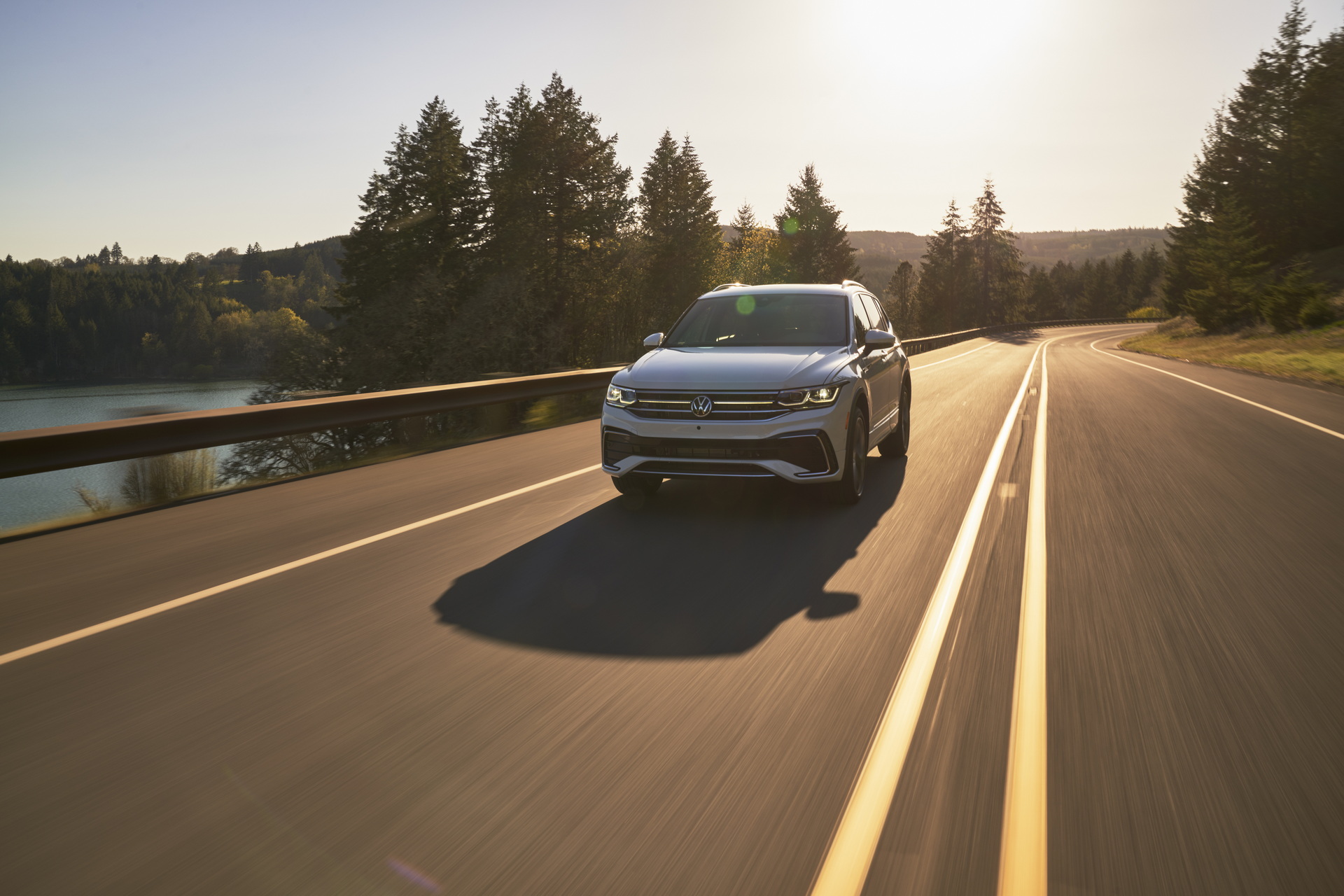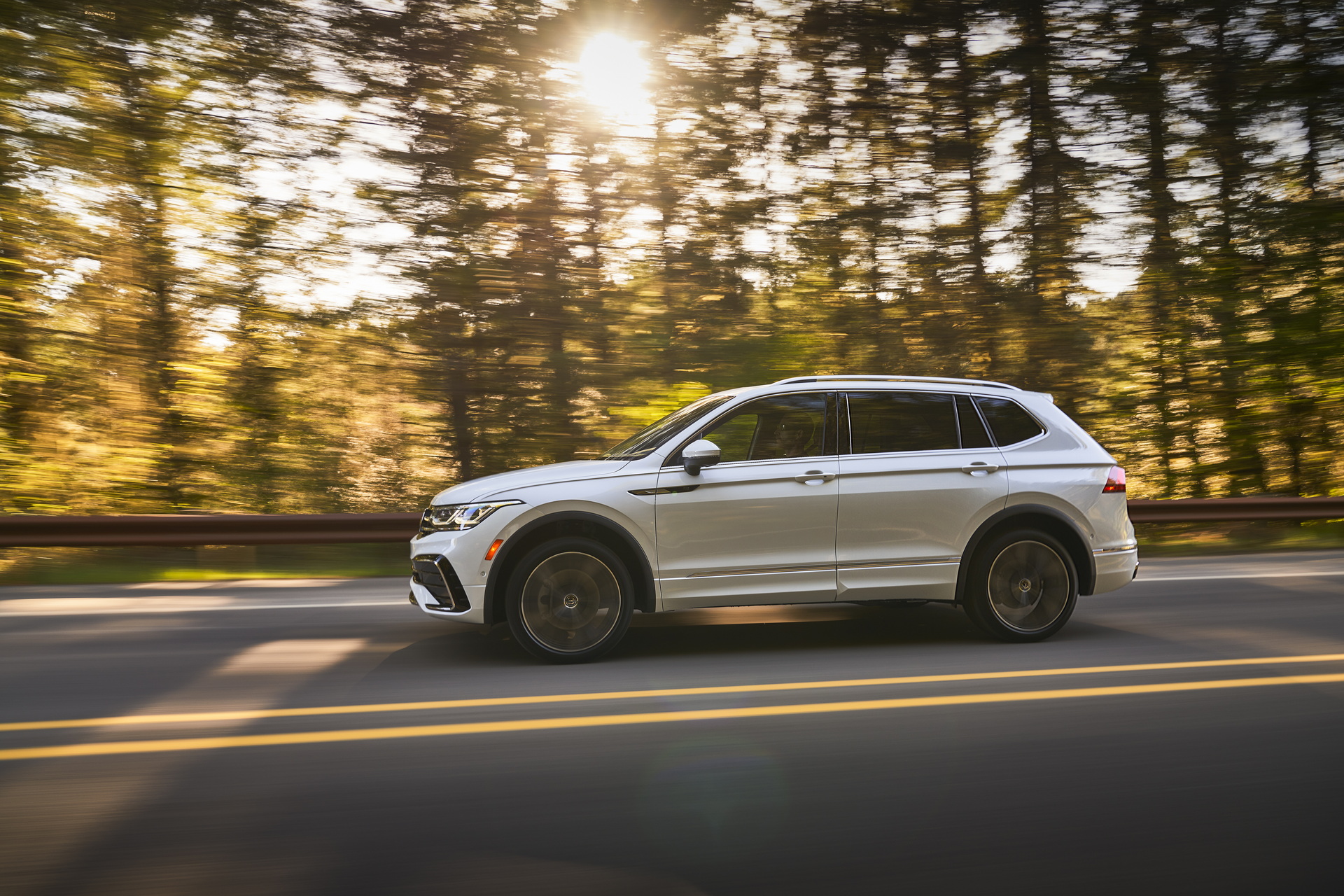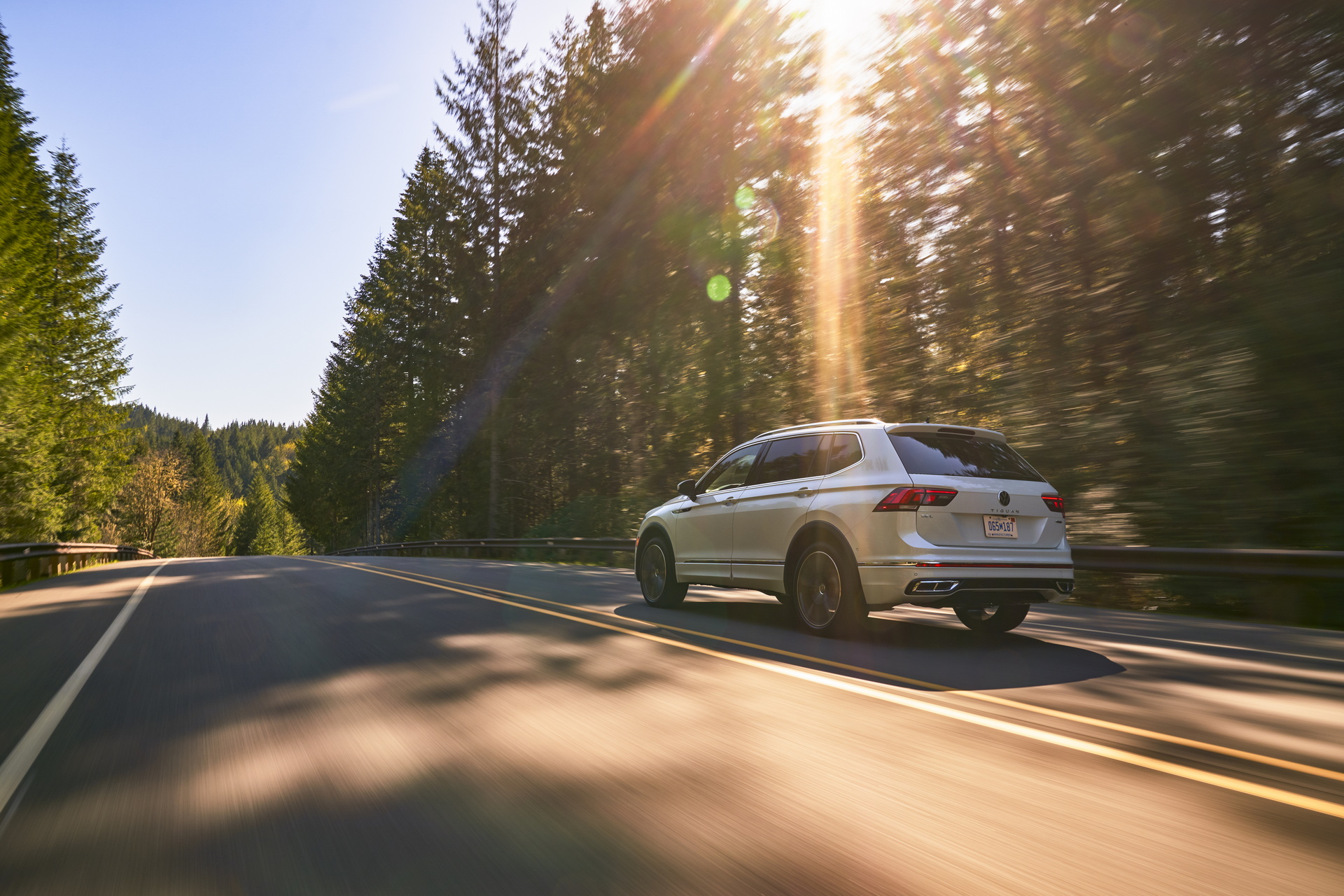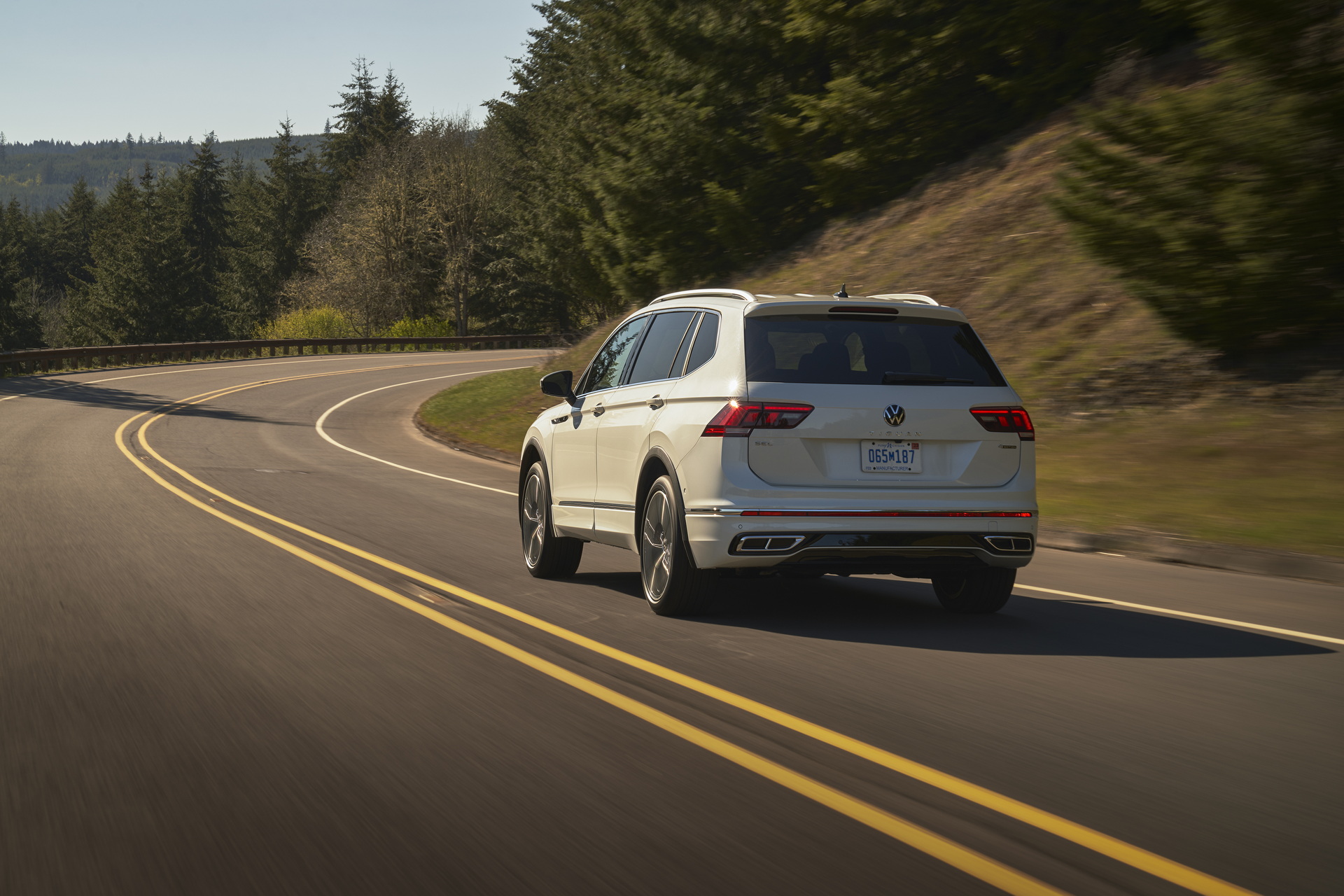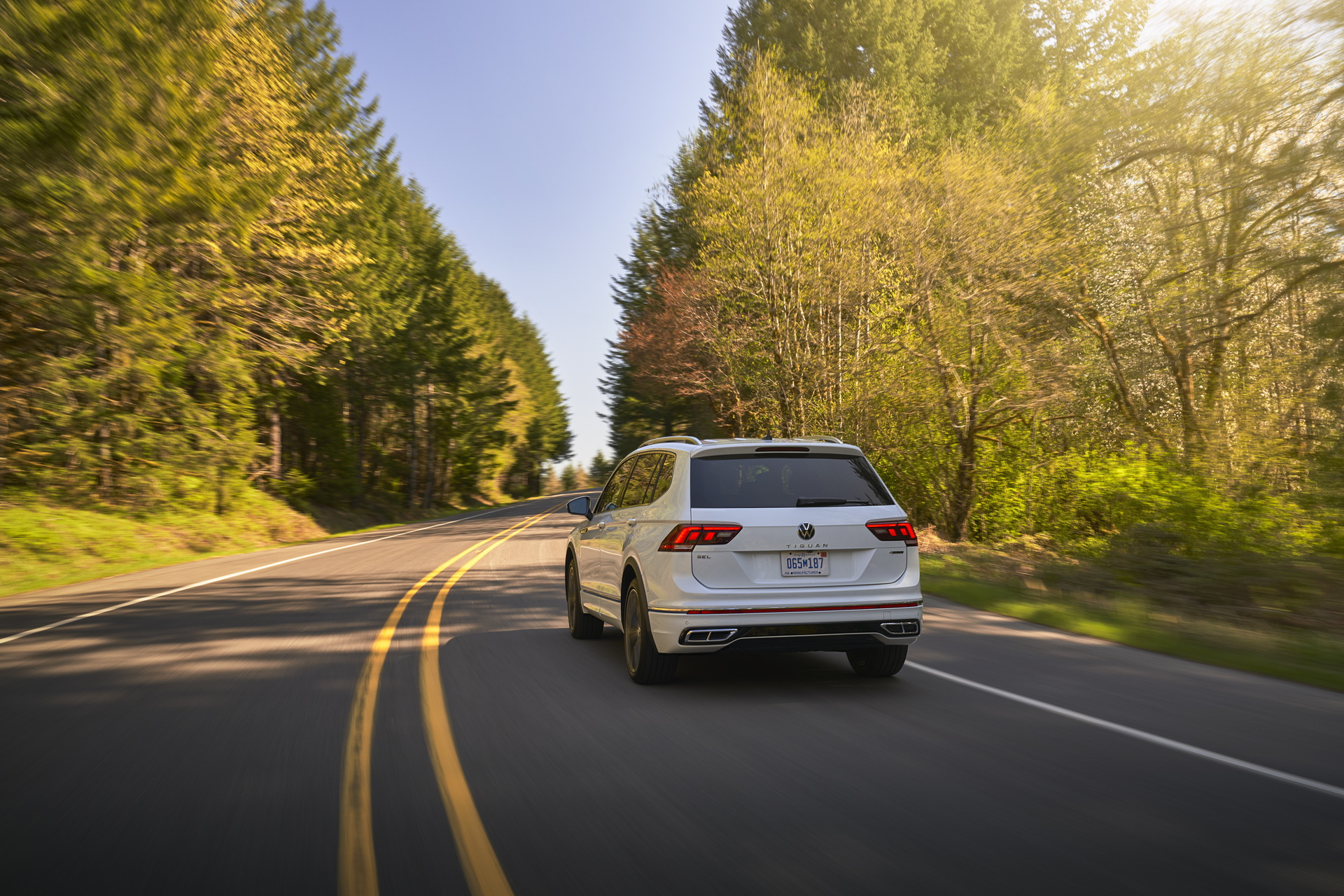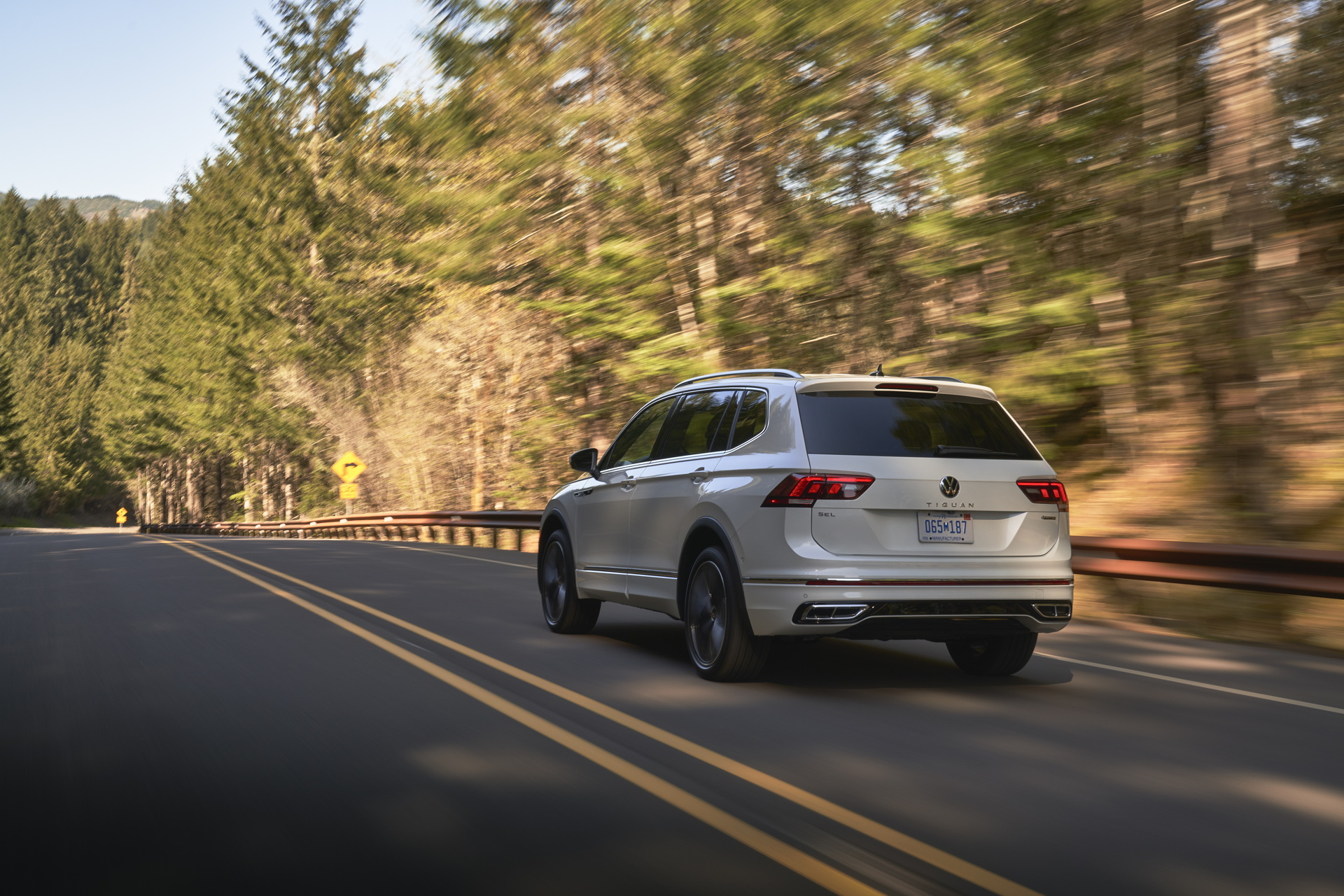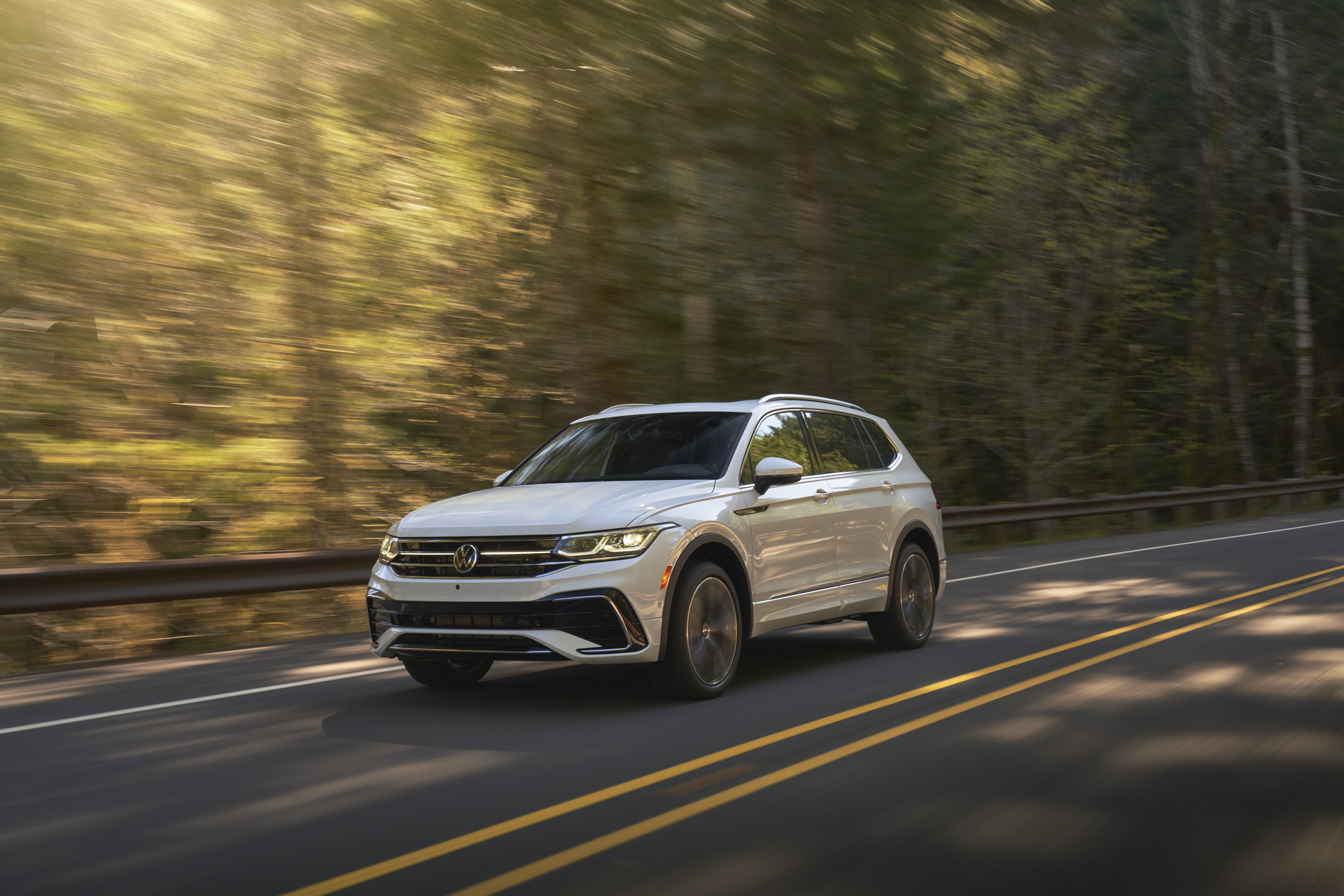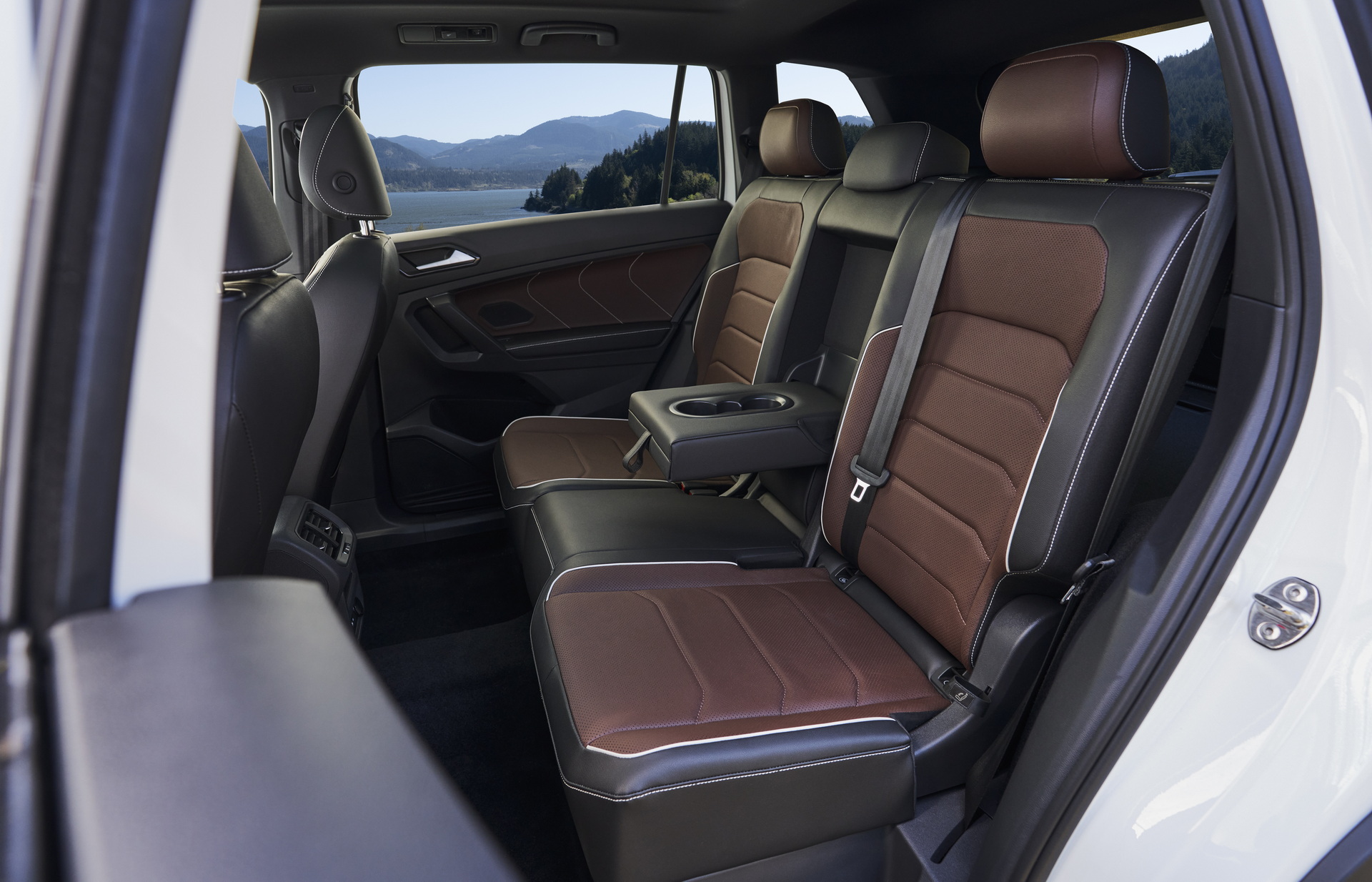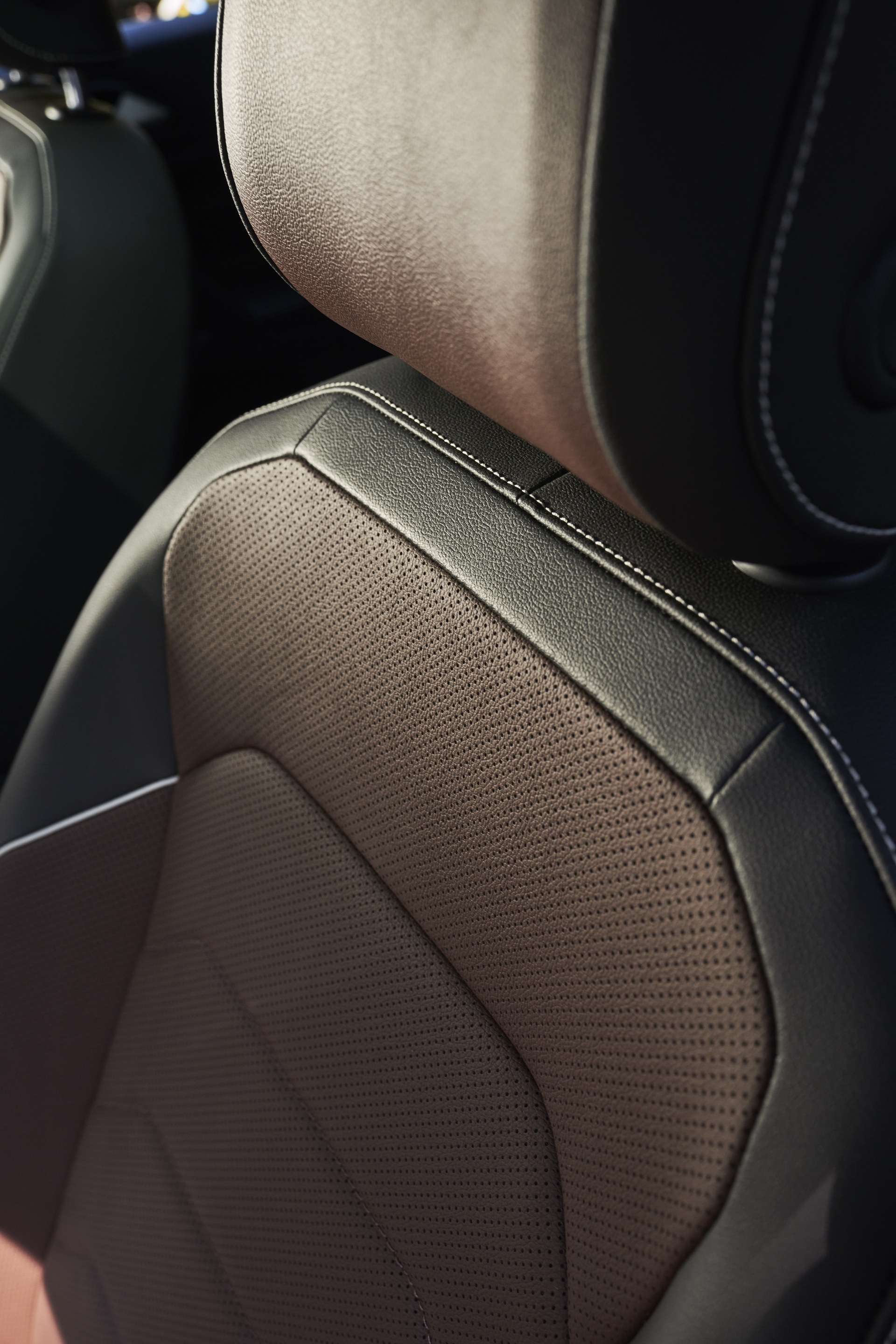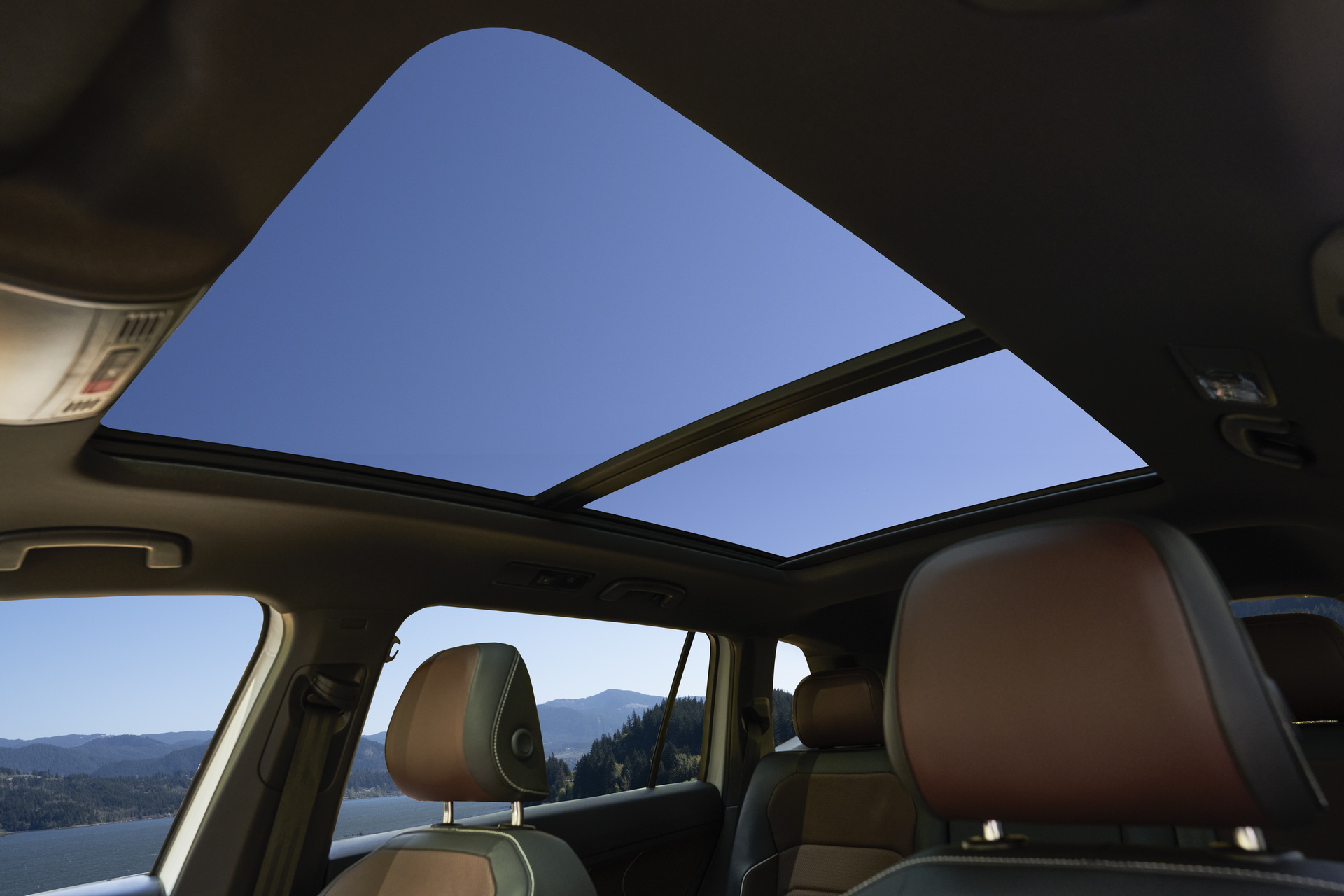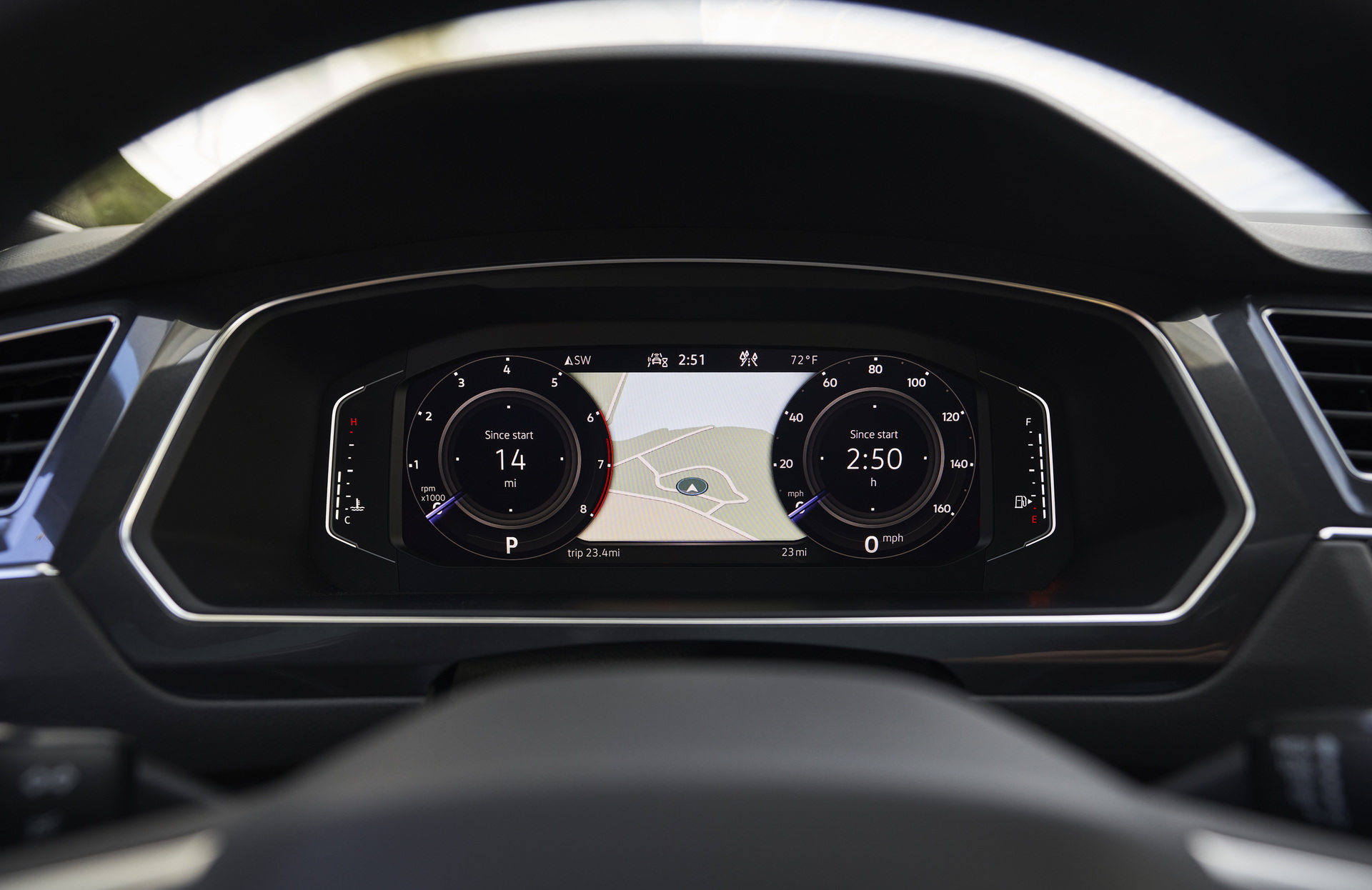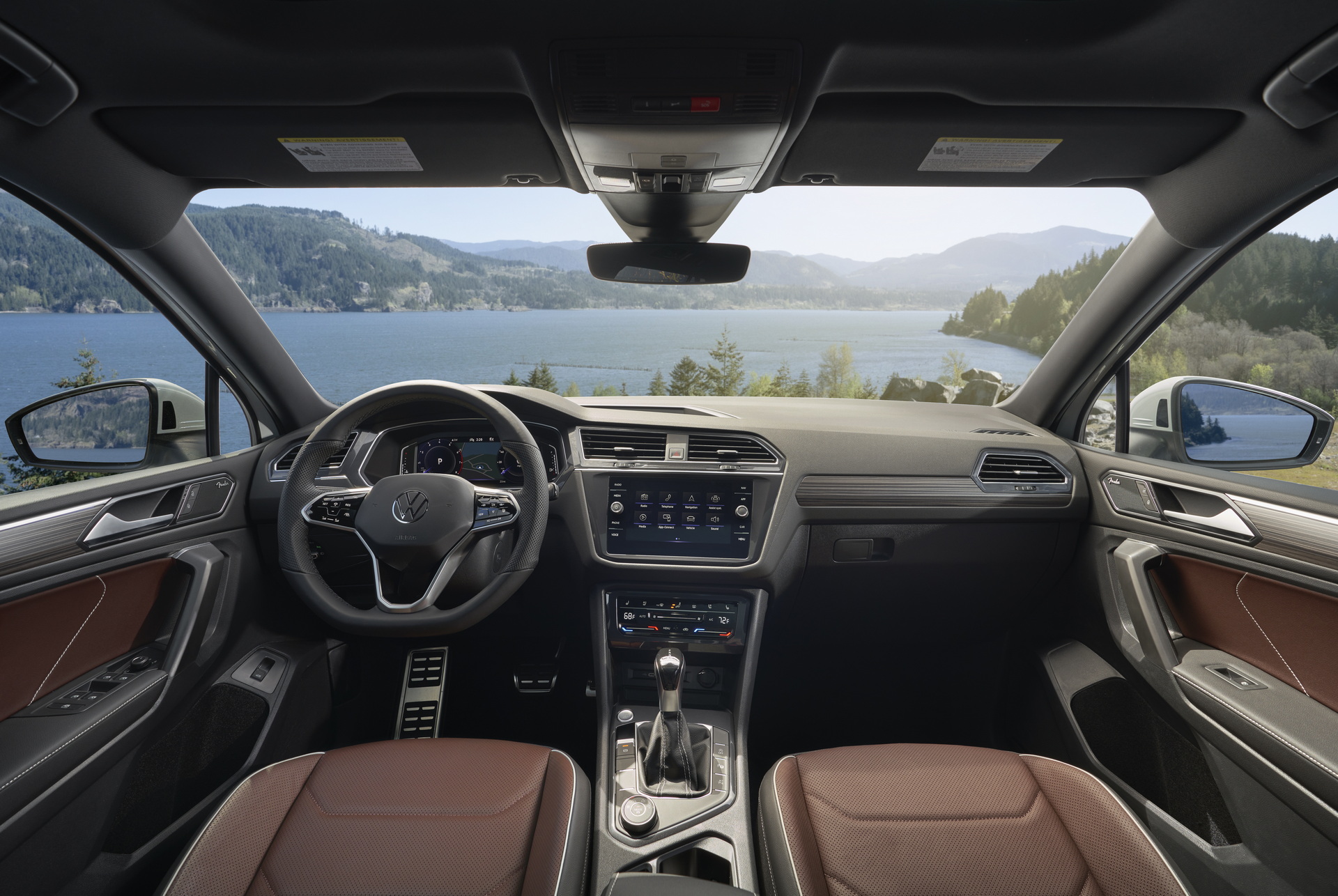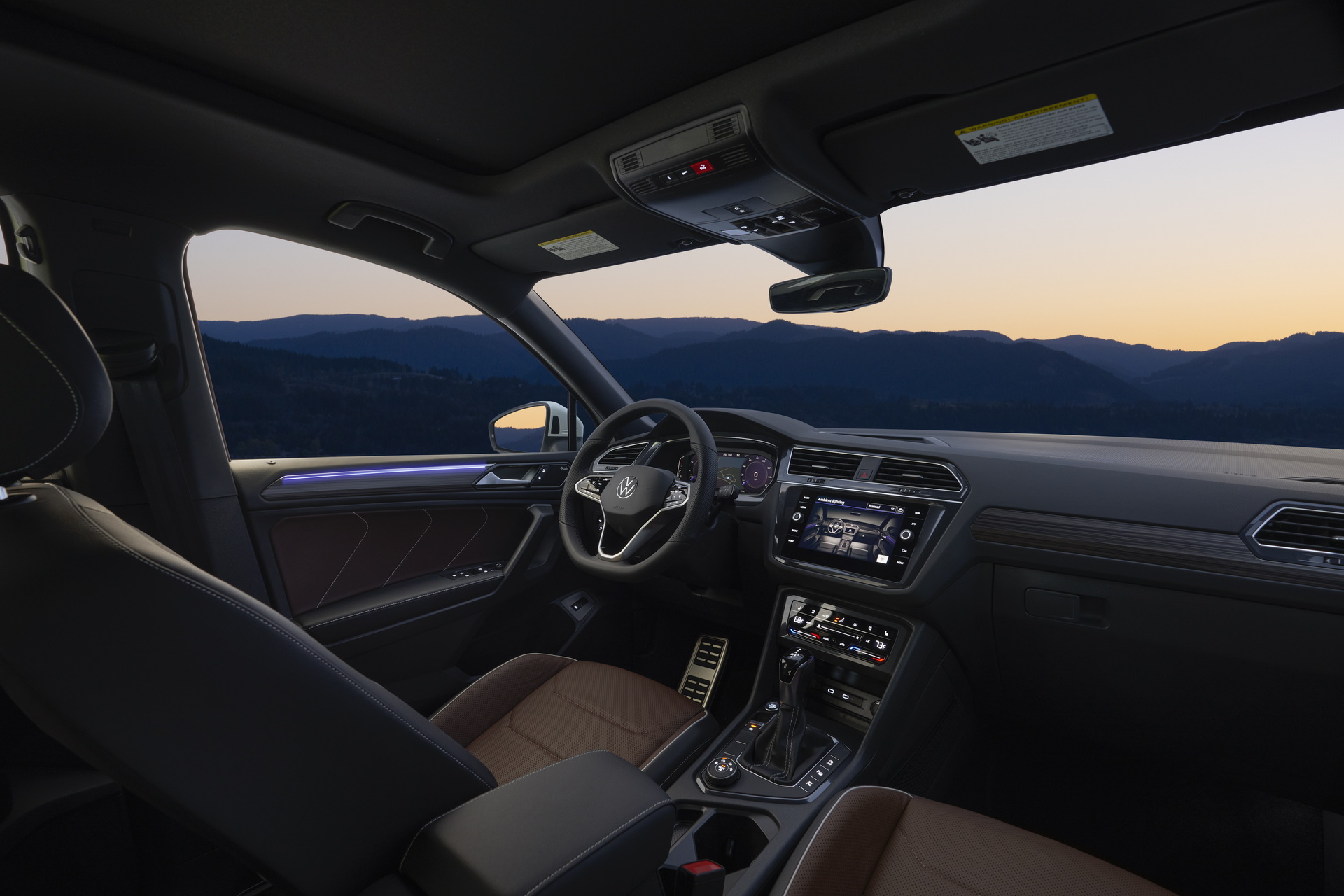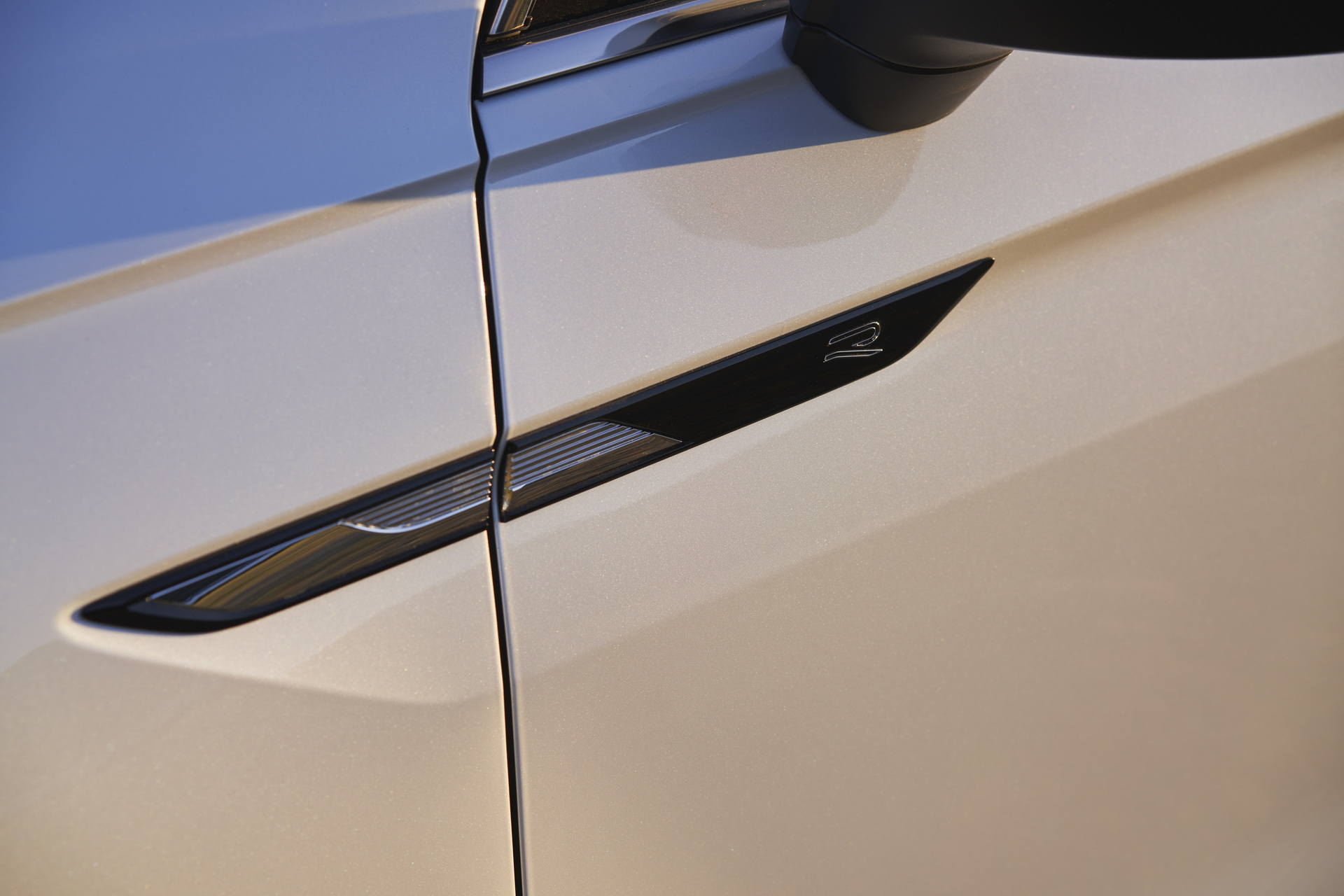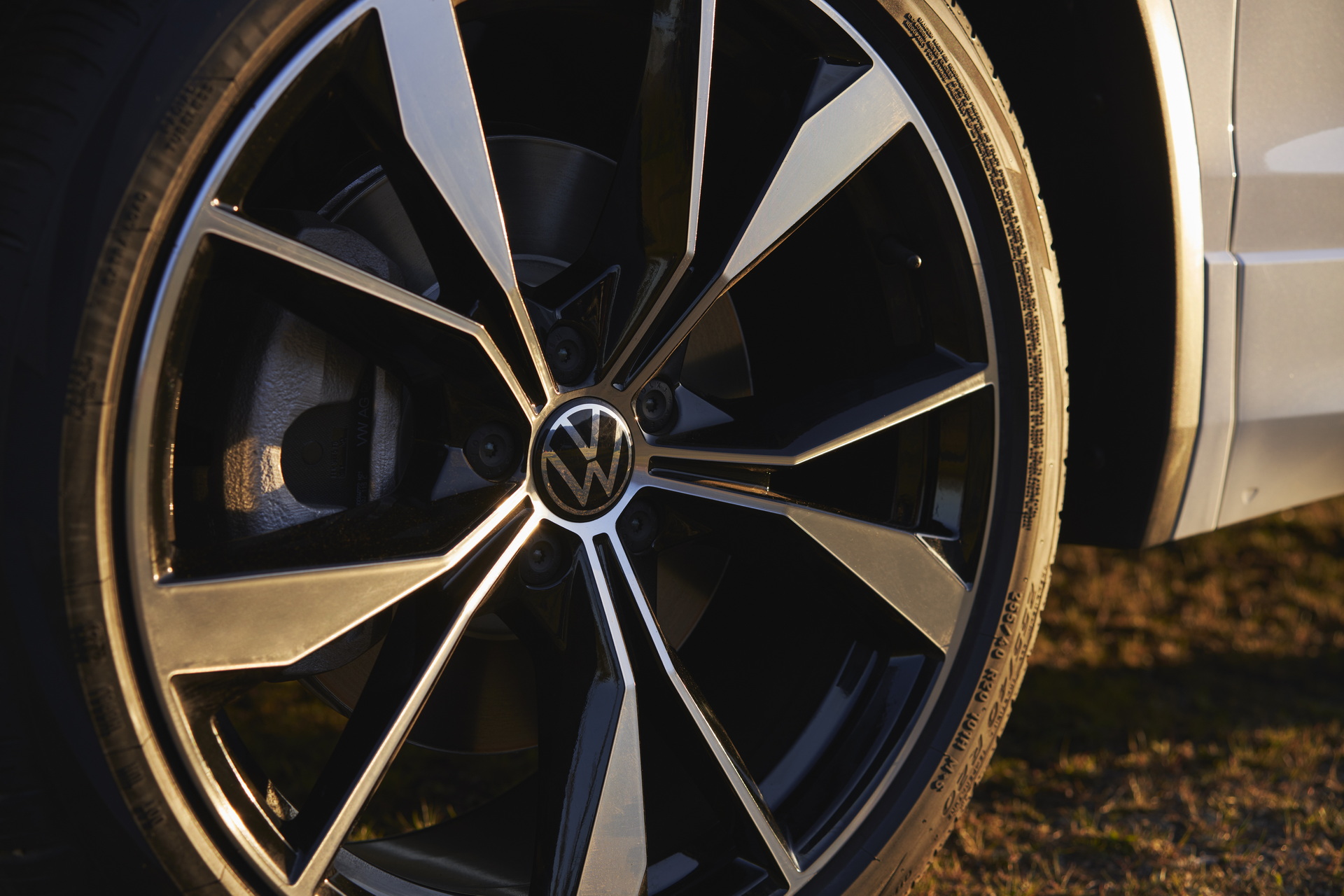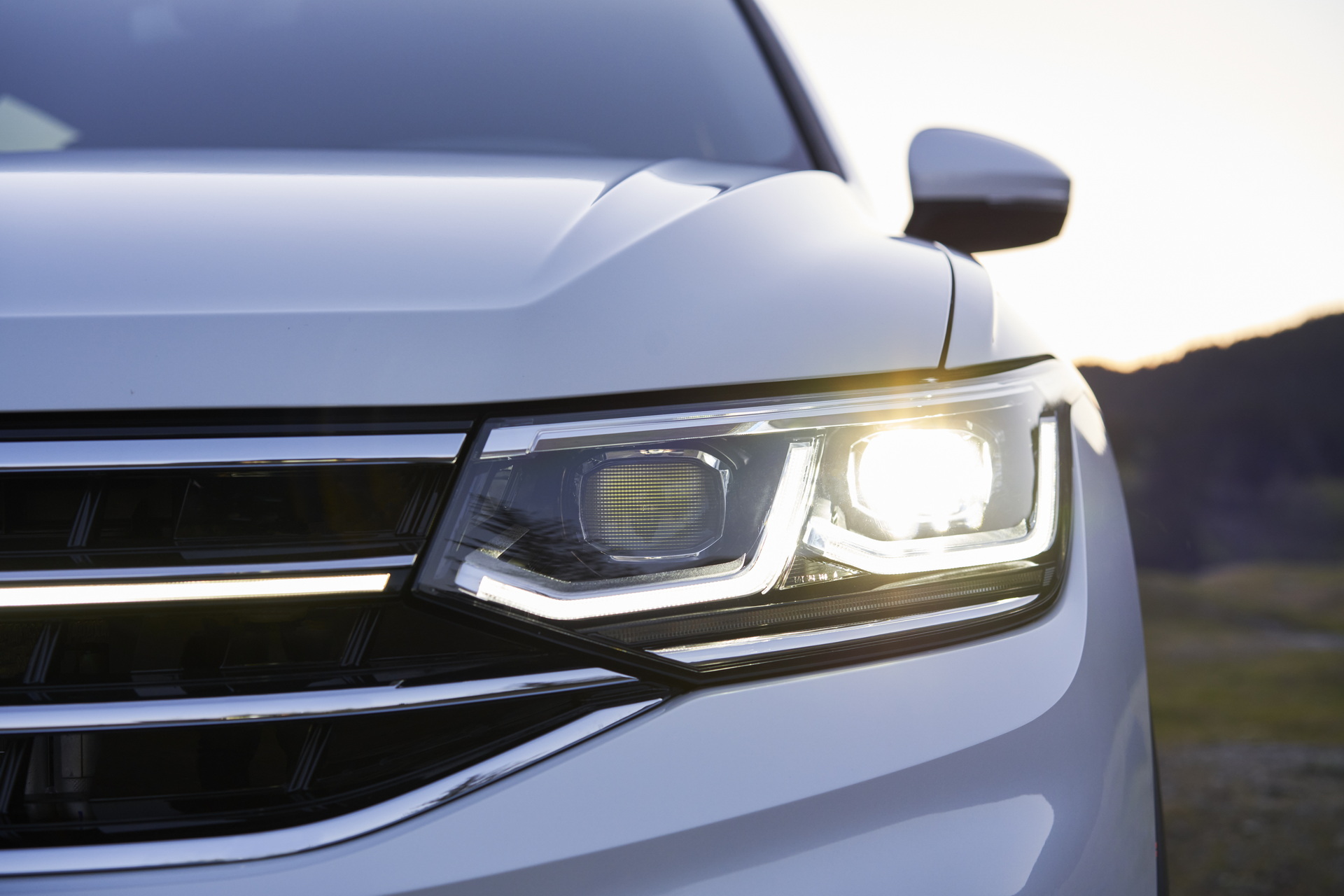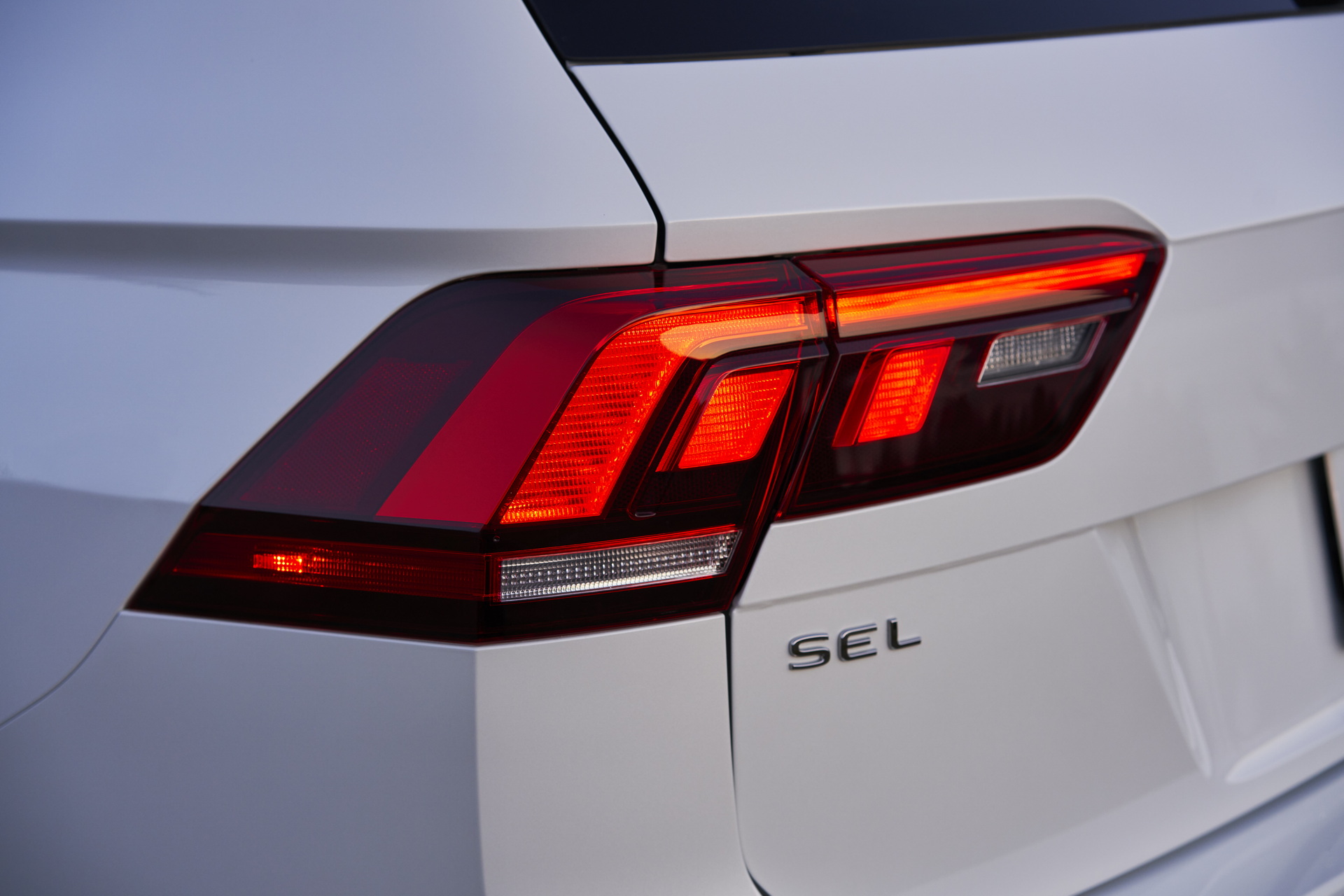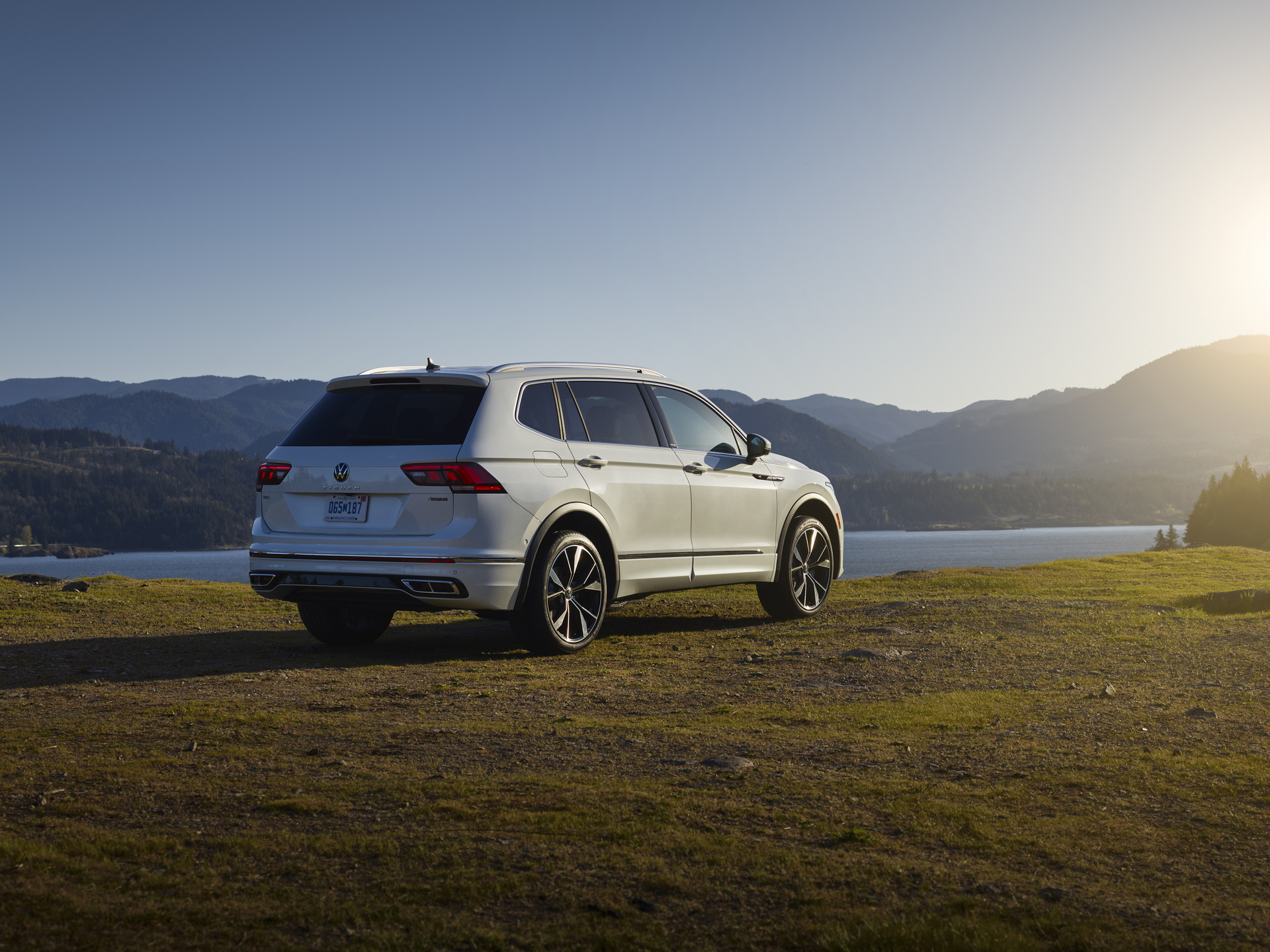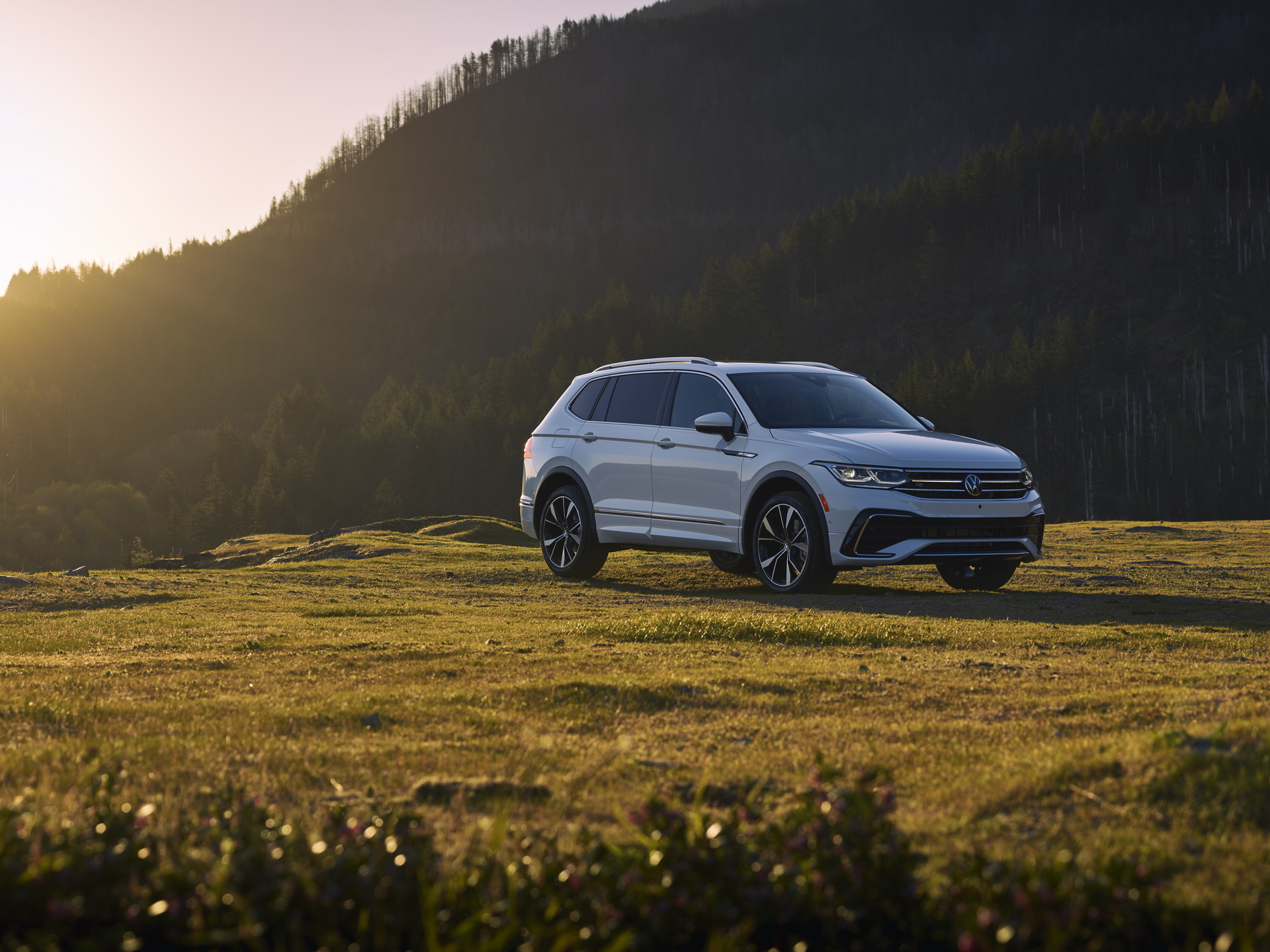Although the standard wheelbase Tiguan was already facelifted in Europe, the long-wheelbase version (known as the Allspace in Europe and simply as the Tiguan in North America) has finally joined in on the fun.
That means new exterior design, new interior design, new tech, new colors, and more. Since this is just an update, though, some things, like engines, will stay the same.
A Modest Exterior Refresh
As with the short wheelbase version, the longer Tiguan’s visual updates are mostly limited to the front and the rear. At the front, the biggest update will be in the form of new headlights. With new LED light signatures, its design comes more in line with the language established by the Mk8 Golf.
Read Also: Europe’s 2021 VW Tiguan Facelift Debuts With New R Variant Pumping Out 316 HP
That also means a lightbar running across the grille in higher trim models, much like the high-end Golfs. But Volkswagen is spreading out the LED headlights to more of the range and in the U.S., they’re standard.
In Europe, meanwhile, IQ.Lights with matrix LED technology can be selected. These units include 24 LEDs per headlight module and can project light onto different parts of the road. The light signatures can also move from side to side when you’re signaling.
Around back, there are new taillights with their own modern design. There’s also a new 4Motion badge and the “Tiguan” badge moves under the Volkswagen emblem. Volkswagen has also worked to improve the R-Line trim to make it look more aggressive and give it an improved bumper design, complete with piano-black inserts and chrome accents.
Two new colors join the Tiguan lineup in Europe and North America. They are Kings Red and Oryx White and join a couple of blues as well as some blacks and greys. In all, there are eight colors to choose from.
Wheel choices, meanwhile, run the gamut from 17-inches on the lowest trim to 20-inches on the highest trim.
Better Be Better Inside
The more eagle-eyed among you may notice that the new long Tiguan is actually a tiny bit (22 mm/0.8-inches) longer than the outgoing model. But this has no impact on interior volume, which remains unchanged.
That means 1,920 liters (67.8 cubic feet) of luggage space just like in the old model and up to three rows of passengers. In Europe, the third row will be an option, but in America, weirdly it’ll be the opposite. That’s because American dealers found that almost no one was buying the three-row Tiguan with AWD. The thinking here is that people who want a seven-seat AWD SUV just size up. So, the three-row Tiguan is only available on FWD models, while all AWD models get two rows of seats.
Regardless of how many seats you get, Volkswagen has worked to make the interior look more premium. The 8-inch instrument screen is now standard across all trim levels, unlike the outgoing model, which could be had with traditional dials. If you want a little more configurability and space, the highest trim models can be had with a 10.25-inch instrument screen.
More Haptic Buttons
Something that will divide opinions is the increased use of VW’s haptic “buttons.” On the wheel, along the infotainment screen, and in use for the HVAC controls, these faux buttons dot the interior of the car. They will give you a little rumble to let you know you’ve pressed them, and to ensure you don’t accidentally press them, but won’t physically click. There’s also a little “furrow” along the HVAC sliders to give your finger a sensory clue where to press. Whether they look premium or frustrating is up to you.
To make it a more sensory experience all over, Volkswagen has also committed to improving the Tiguan‘s interior. The seats can now be had in leather in the highest trims, leatherette in the mid-trims, and cloth in the lowest trims. No matter which ones you get, though, (in the U.S. at least) they’ll all be heated. The leather seats, meanwhile, can come ventilated to keep you cool on hot summer days.
New interior colors are also available for the mid and high-trim American models. The leatherette interiors can now be ordered in a light brown “Cinnamon” hue, while the full leather gets a darker “Noisette” brown. There are also new inserts on the door that match the seats and are designed to look a little more upscale. In the highest trim models, you can also opt for a lightbar in the door that can change into any one of 15 available colors.
North America Continues With A 184HP 2.0T
The subtitle pretty much says it all, but in case you’re curious here’s what that means in the U.S.:
Americans get just one option, a 2.0-liter inline-four cylinder turbocharged engine making 184 hp and 221 lb-ft of torque. That’s hooked up to an 8-speed automatic transmission. Power can be sent to just the front or all four wheels depending on what you opt for. All-wheel drive is available in every trim.
More Engine Choices For Europe, Including Diesel
The same 2.0-liter inline-four is available, though it can be selected at either 140 kW (187 hp) or 180 kW (241 hp). Either way, it sends its power to all four wheels as standard and does so via a 7-speed DSG transmission.
Those looking for a slightly more economical option can opt for the 1.5-liter petrol engine, which makes 110 kW (147 hp) and transmits its power through a 6-speed manual or 7-speed DSG gearbox.
And finally, a 2.0-liter diesel engine is also available. Depending on how much you pay, it can either make 110 kW (147 hp) or 147 kW (197 hp).
No ‘R’ Version For The Longer Tiguan
So far, it seems that the 315 hp Tiguan R will be limited to the short-wheelbase models. According to Hein Schafer, Volkswagen America’s Senior Vice President of product marketing and strategy, the odds of an R making it stateside are very low.
“We did look at it. It’s looking still highly unlikely,” Schafer told Carscoops during an informational session with media. “I don’t think we’re completely out of the race, but I think it’s unlikely for the U.S. market.”
More Tech As Standard
And finally, Volkswagen is offering more technology as standard for the updated Tiguan. In Europe, that means that the multifunction steering wheel, light assist, online services, adaptive cruise control, and autonomous emergency braking are all standard.
In North America, Forward Collision Warning with autonomous braking and side assist are standard. Volkswagen’s wider suite of safety tech, known as IQ.Drive, will be available as an option on the lowest “S” trim, and standard across the rest of the lineup, which includes the SE, SE R-Line, and SEL R-Line trims. The SEL R-Line will be available with high-beam control, automatic parking, and road sign recognition, too.
When, Where, And How Much?
The new long-wheelbase Tiguan will be built at four factories around the world. The North American, European, African, Asian, and Australian models will be made in Puebla, Mexico. Russians will have theirs built at a factory near Moscow, while two Chinese factories will supply that country’s Tiguans.
In the U.S., the new Tiguan will go on sale this fall, either in late September or early October. Unfortunately, pricing information is not yet available, though we don’t expect prices to change significantly.
Note: The gallery includes images of both the North American 2022MY Tiguan and its European sibling, the 2021 Tiguan Allspace




